Silk Fabric

Silk is the strongest natural textile in the world. This textile was just recently surpassed in strength by alab-engineered biomaterial, but it remains the strongest fabric made through natural processes.
What Is Silk Fabric?
Silk is the strongest natural textile in the world. This textile was just recently surpassed in strength by alab-engineered biomaterial, but it remains the strongest fabric made through natural processes.
Despite its immense tensile strength, silk is generally prized for other reasons. Silk’s softness has made it a hotly desired commodity throughout history, and this simple fiber has built legendary trade routes and transformed cultures throughout the Old World.
Comprised of a natural protein fiber, silk mainly consists of fibroin, which is a protein that certain types of insect larvae secrete to make cocoons. While other insects also produce silk-like substances, most of the world’s silk is derived from Bombyx mori larvae, which are worms that only live on mulberry trees.
In certain lighting conditions, silk produces a shimmering optical effect, which is due to the triangular prism-like structure of silk fibers. These prisms reflect light at various angles, which results in the subtle rainbow hue that has made silk so famous.

Isabella Silk Sleep Mask
Originally, human beings harvested wild silk to make rudimentary fabrics. While worms spin silk in the wild in parts of China, India, and Europe, wild silk is never available in large enough quantities to satisfy the needs of full-blown textile production.
Cultivation of domesticated silk originated in China. One piece of archaeological evidence dates the use of silk textiles in China back to 6500 BC, and the ancient Chinese certainly used silk as early as 3600 BC.
While historical records of the origin of silk manufacturing in China are largely lacking, Chinese legends credit Empress Leizu with the development of sericulture, which is the art of making silk. In the early days of Chinese culture, only the nobility wore silk, but as Chinese civilization developed and became wealthier, commoners started wearing this soft and durable fabric as well.
Silk production in China eventually led to the development of prominent pre-industrial trade routes. The Silk Road stretched from China to Western Europe, and Chinese merchants traveled up and down this trade route to exchange silk for the commodities of distant nations.
For generations, the secrets of sericulture were the most prized and guarded pieces of knowledge of the Chinese nobility, but eventually, information on how to make refined silk spread to Korea and India during the first few centuries AD. India, Thailand, and other Asian nations already had highly-developed sericulture processes at this point, but the Chinese method of making silk was considered to be superior.
Based on limited legends and historical records, silk may have also been produced in the West during the distant past. Whatever the case may be, silk was highly prized by Westerners as far back as Roman times, and the popularity of this rare and mysterious substance only grew during the Medieval period.
By the 11th century AD, silk production was widespread throughout Europe. Many Italian city-states, such as Lucca, Venice, and Florence, were highly economically reliant on silk production during the Middle Ages, and the silk industry gradually spread to France and Spain.
King James I introduced silk production to the New World in the 17th century, and American states such as Connecticut and Massachusetts rapidly became hubs of silk production. World War II cut America off from Asian silk, and as a result, American corporations developed synthetic replacements such as nylon.
How Is Silk Fabric Made?
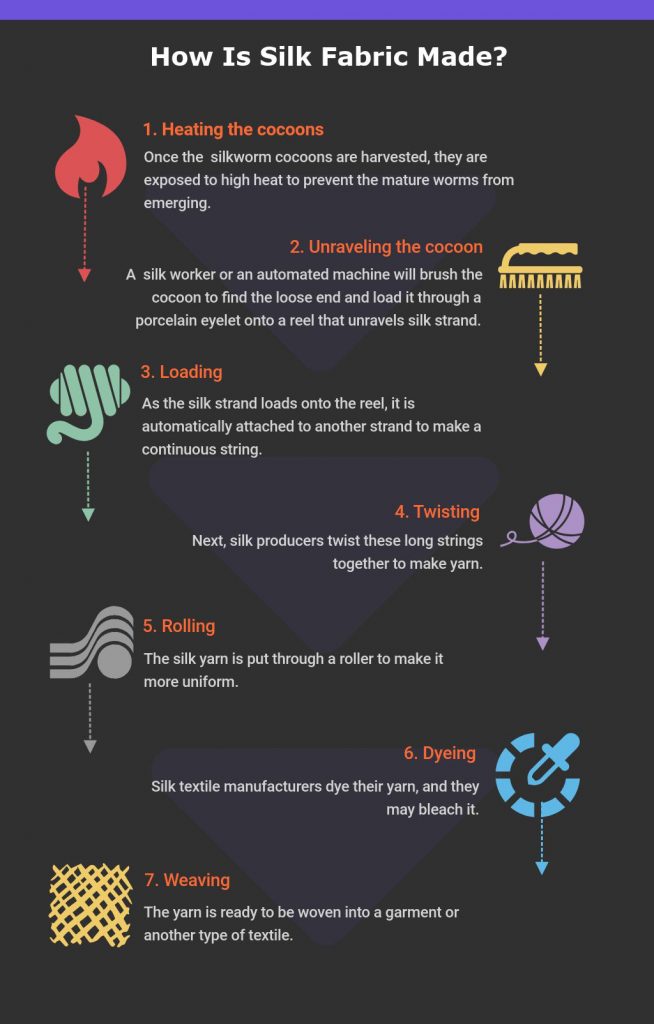
While the silk industry has expanded greatly during the last century, the processes used to make this fabric are still largely the same as they were in the ancient world.
Once silkworm breeders have harvested silkworm cocoons, they usually expose them to high heat to prevent the mature worms from emerging. Some animal rights activists protest this practice; they contend that it’s possible to harvest silk without killing silkworms, but not much credence is given to this position.
After the cocoons have been heated, silk producers carefully unravel the threads that the silkworms meticulously put into place. To do so, the silk cocoons may be boiled briefly to remove a small amount of the sericin in the cocoons, which is the glue-like substance that silkworms excrete to form their metamorphosis chambers.
Silkworms make cocoons out of one long strand of fiber, which means that a fully unraveled cocoon results in a single string of silk. To unravel a cocoon, a silk worker or an automated machine will brush the cocoon to find the loose end and load it through a porcelain eyelet onto a reel that unravels silk strand.
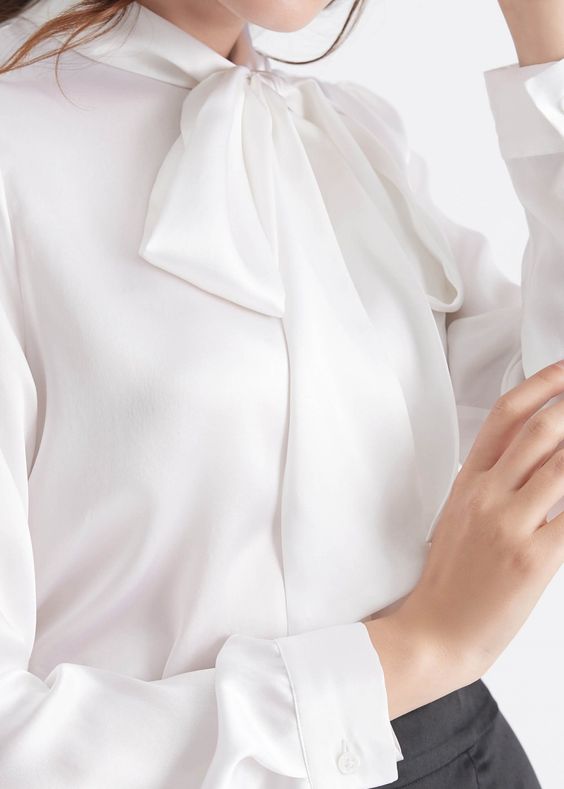
Bow-tie Neck Silk Blouse
As the silk strand loads onto the reel, it is automatically attached to another strand to make a continuous string. The sericin in the silk strand helps the strands stick together. Next, silk producers twist these long strings together to make yarn.
Silk producers may perform a variety of post-production processes to create silk yarn that has certain desired attributes, and then the silk yarn is put through a roller to make it more uniform. At this point, the yarn is ready to be woven into a garment or another type of textile.
Before they weave it, most silk textile manufacturers dye their yarn, and they may bleach it. These manufacturers may also stiffen or steam silk to achieve desired attributes.
How Is Silk Fabric Used?
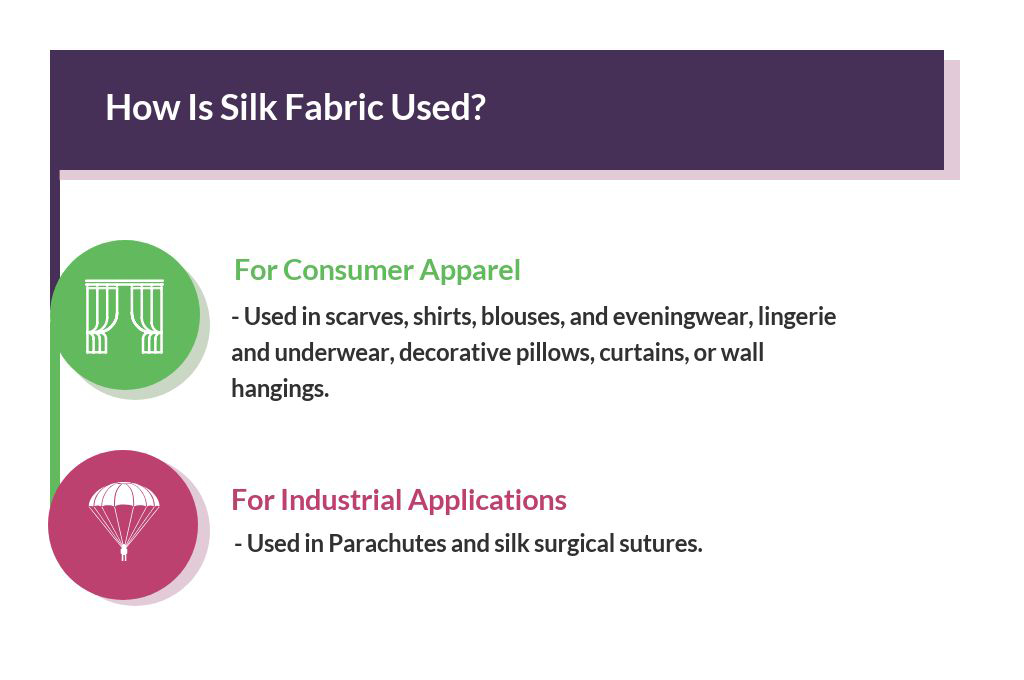
Silk can be used in thousands of different ways. For our purposes, however, we’ll separate the potential purposes of this fabric into consumer and industrial categories:
Consumer
The most common consumer application of silk is apparel production. Silk has been prized for thousands of years for its incredible softness and durability, and to this day, consumers prefer real silk over its synthetic alternatives.
Examples of consumer apparel items made from silk include scarves, shirts, blouses, and eveningwear. Due to its lightweight and soft attributes, silk is also a favorite material for lingerie and underwear for men. In the home, silk might be used to make decorative pillows, curtains, or wall hangings.
Industrial
Even though there are synthetic alternatives for this application, many parachute manufacturers still make their products with silk due to this material’s durable and lightweight applications. In addition, medical practitioners and surgeons use silk surgical sutures to close wounds and surgical openings. This fiber is very thin, and it has antibacterial attributes, which makes it ideal for this application.
Where Is Silk Fabric Produced?
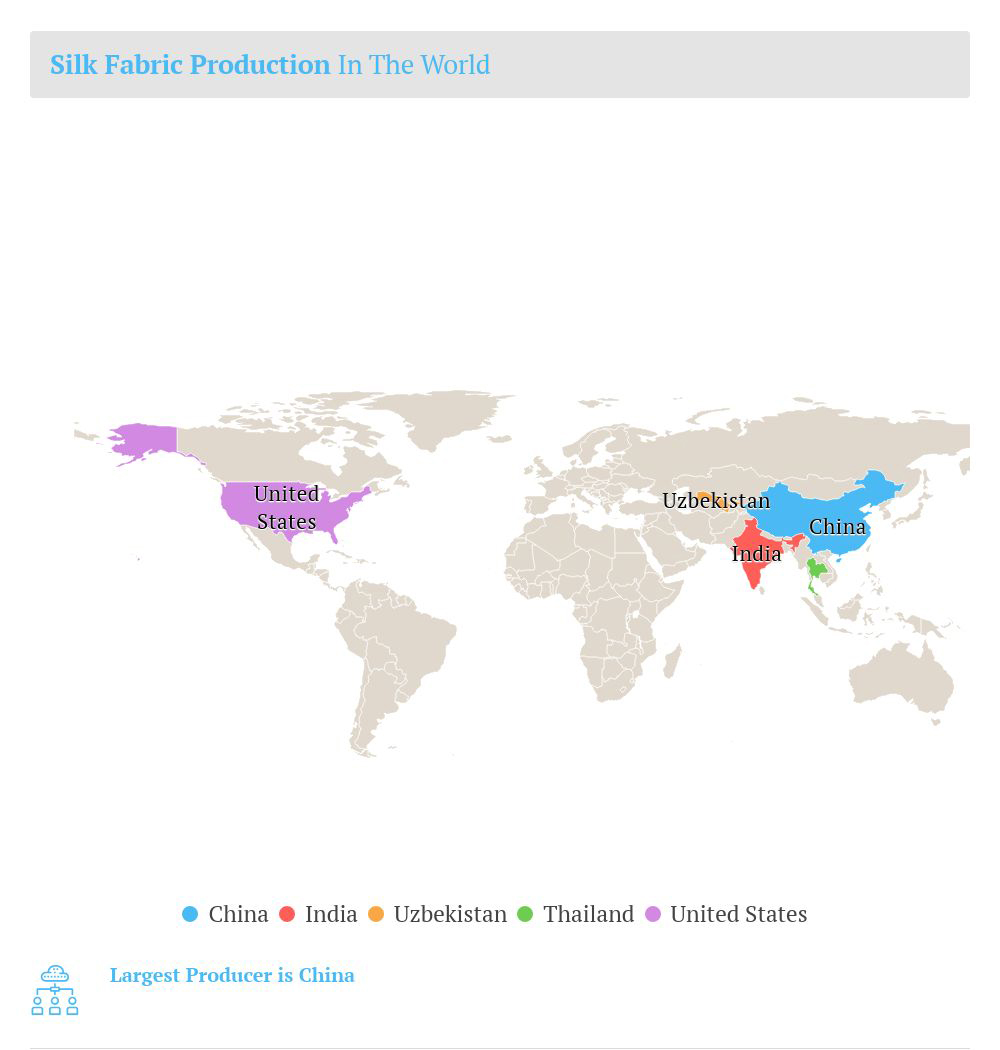
According to World Atlas, China holds a dominant position as the world’s largest silk manufacturer. At 146,000 metric tonnes of silk per year, this East Asian nation vastly outstrips its largest competitor, India, which only produces 28,708 metric tonnes of silk every year.
Uzbekistan comes in at third place, and Thailand is fourth in silk production worldwide. China is the world’s largest silk market as well as the largest producer of this textile, and the United States and European Union also consume a lot of the silk produced in India and China.
How Much Does Silk Fabric Cost?
The site EmergingTextiles.com releases quarterly reports indicating the current prices of silk in China. According to the latest report, Chinese silk currently ranges between $50 and $55 per kilogram. The Indian government also keeps track of the prices of silk produced in this nation.
There’s no getting around the fact that silk fabric is expensive. This type of fabric is hard to produce, and due to shipping costs, it is expensive to move silk from its point of origin to the end consumer. Keep in mind, however, that a kilogram of raw silk can go a long way when you’re producing garments.
What Different Types of Silk Fabric Are There?
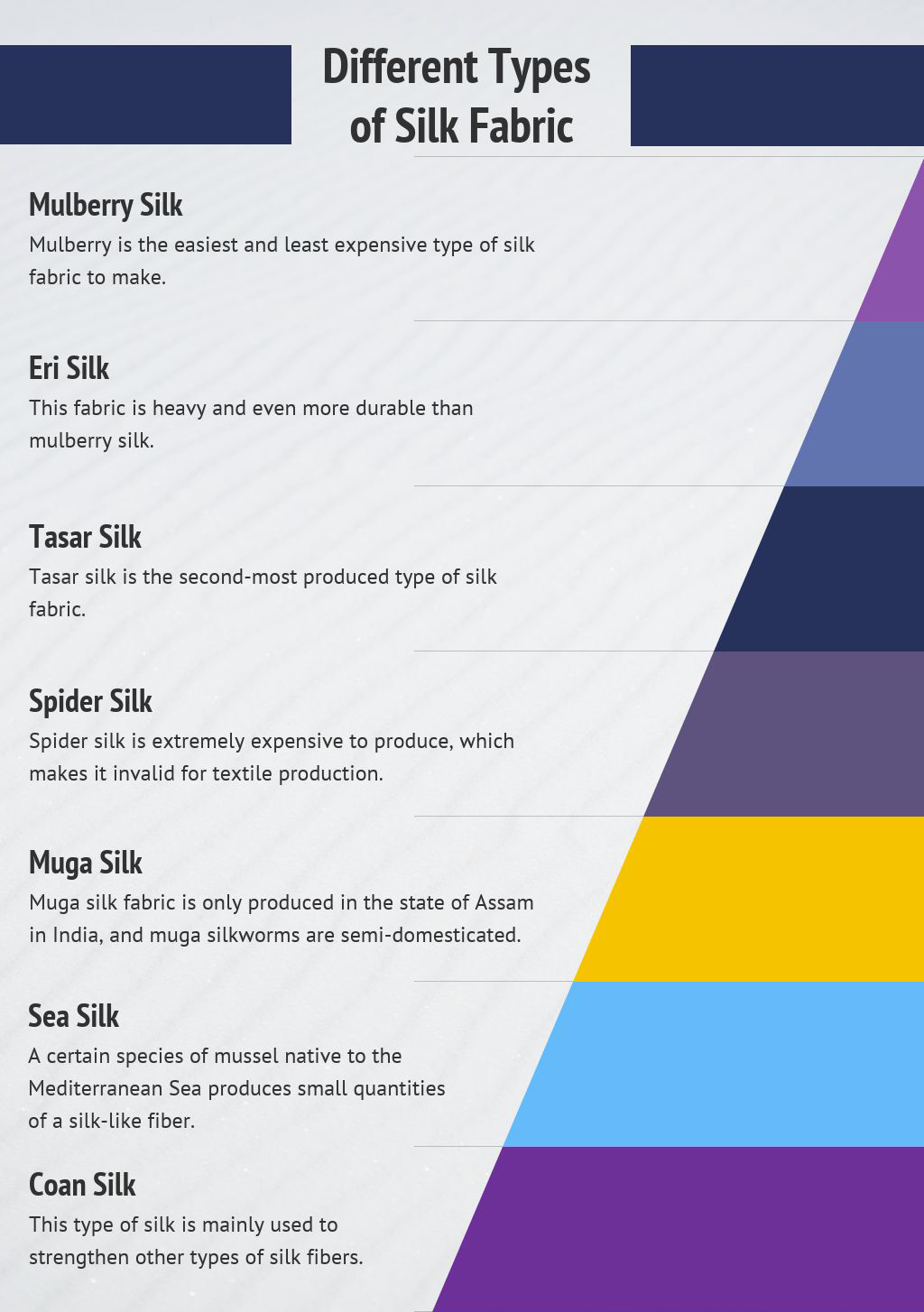
While mulberry silk is, by far, the most widely produced type of this fabric, there are a few other types of silk fabric worth mentioning as well:
- Mulberry Silk
Mulberry is the easiest and least expensive type of silk fabric to make. Almost all the silk in the world is mulberry silk, and like other types of this textile, mulberry silk fabric is renowned for its strength, softness, and durability.
- Eri Silk
Since the production of eri silk fabric doesn’t require killing silkworms, this textile variety is also called “peace silk.” While hardly any eri silk is made throughout the world, this fabric is heavy and even more durable than mulberry silk. Since eri silkworms live on castor trees, this type of silk is sometimes known as “castor silk.”
- Tasar Silk
Next to mulberry silk, tasar silk is the second-most produced type of silk fabric. This variety of silk is wild, and it is produced by silkworms native to India. Japan is also home to tasar silkworms, but the silk these worms produce is green.
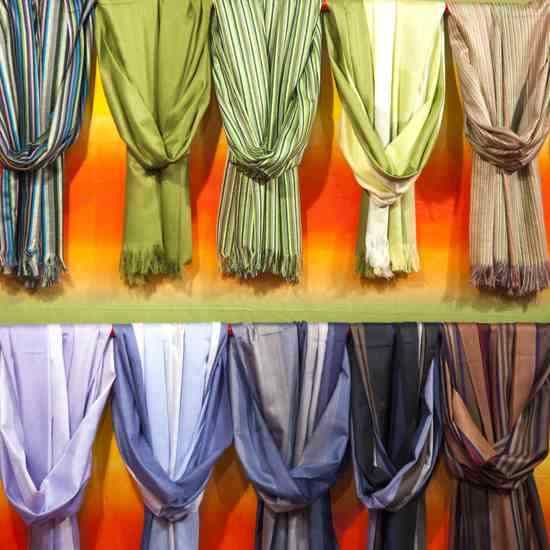
Alum Mordant Recipe for Dyeing Silk Fabric
- Spider Silk
Certain types of spider silk are highly tensile, but spiders can’t be bred like silkworms. Therefore, spider silk is extremely expensive to produce, which makes it invalid for textile production. Instead, producers use spider silk to make bulletproof vests, microscopes, telescopes, and other industrial or niche products.
- Muga Silk
Muga silk fabric is only produced in the state of Assam in India, and muga silkworms are semi-domesticated. While muga silk isn’t widely known in the rest of the world, generations of Assam residents have made muga silk garments for the nobility of this region.
- Sea Silk
A certain species of mussel native to the Mediterranean Sea produces small quantities of a silk-like fiber. Residents of Taranto, Italy have domesticated these mussels, and this town produces small quantities of sea silk fabric, which is also called “mussel silk.”
- Coan Silk
A species of silkworm called Pacypasa atus produces coan silk, which is native to certain parts of Greece, Turkey, and Italy. These silkworms feed on pine, juniper, and oak trees, and while coan silk was widely used in Ancient Rome, coan silk fabric production today is limited, and this type of silk is mainly used to strengthen other types of silk fibers.
How Does Silk Fabric Impact the Environment?
Since silk is a natural fiber, it is inherently sustainable and non-damaging to the environment. The harvesting and production of wild silk does not have any negative environmental impact, but cultivating silk and transporting it around the world may harm the environment in a variety of ways.

Retro Style Silk Blouse
Animal rights organizations, such as PETA, protest silk production because silkworms are killed in the process. However, silk production remains one of the cleanest textile industries; mulberry trees do not require fertilizers or pesticides, which means it’s possible to harvest cultivated silk without introducing any toxic chemicals into the environment.
Over the years, silk moths have mutated due to domestication. Mature moths are no longer able to eat due to underdeveloped mandibles, and they are blind. They only live long enough to lay approximately 500 eggs on the leaves of nearby mulberry leaves.
Concerns for silkworms and silk moths aside, silk production in countries like China and India often involves worker exploitation. While automation has made silk production easier and fairer for workers in every part of the world, not all production facilities have access to the same forms of automation.
Since most areas of the world don’t produce much silk, it’s necessary to ship this substance long distances to reach its final destination. Therefore, fossil fuels are expended in the process of shipping silk. Despite these minor concerns, silk production does not significantly harm the environment, and since silk is 100 percent biodegradable, it does not contribute significantly to pollution.
Silk Fabric Certifications Available
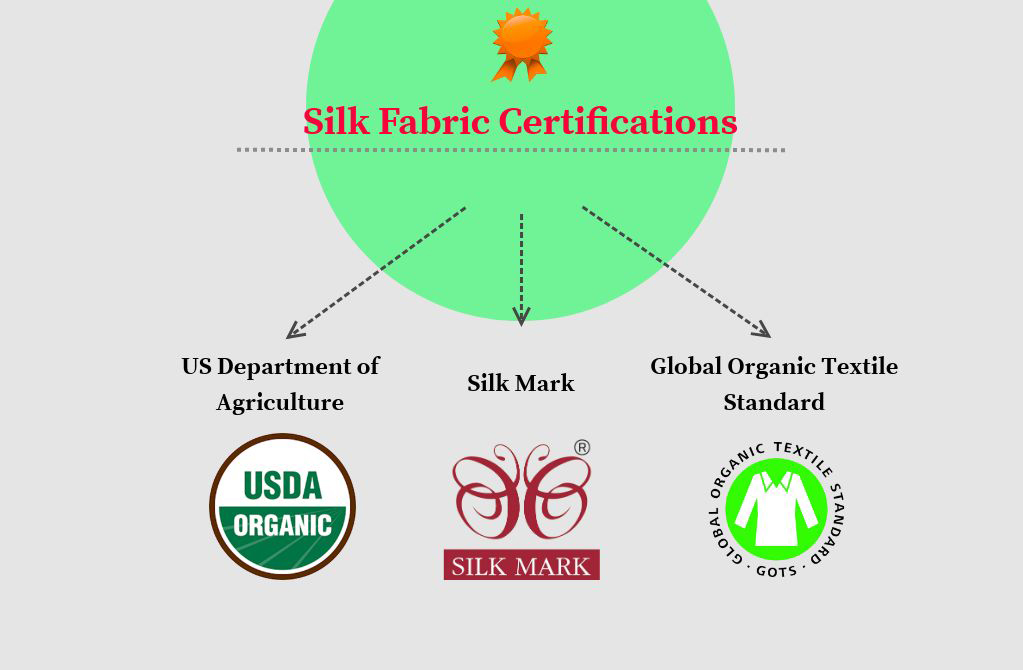
There are a variety of silk certifications that manufacturers of this textile can use to express the value of their products to customers.Silk Mark certifies Indian textiles, and if a silk garment or another silk product features the Silk Mark logo, it has been judged as being compliant with the strict standards that this organization demands.
Even though silk production is extremely limited in the United States, it’s possible to have American silk certified by the United States Department of Agriculture (USDA). In addition, the European Union’s organic certification body can certify silk grown within this bloc of European countries as being cultivated with organic or sustainable processes.
Most consumers, however, look for the logo of the Global Organic Textile Standard (GOTS) to determine whether a silk garment is up to snuff. The majority of silk is produced in China, but this country doesn’t impose any meaningful regulation on its silk producers. Instead, it’s up to organizations like GOTS to inform consumers about the organic status of the silk they’re purchasing.
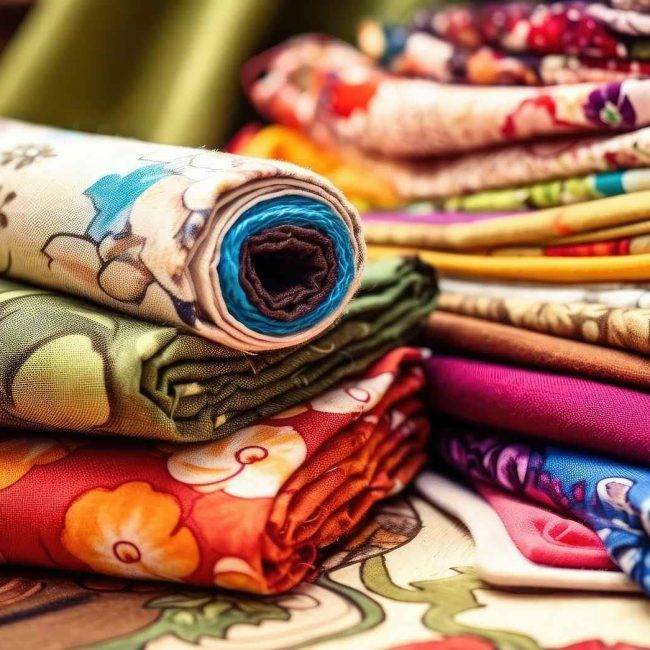

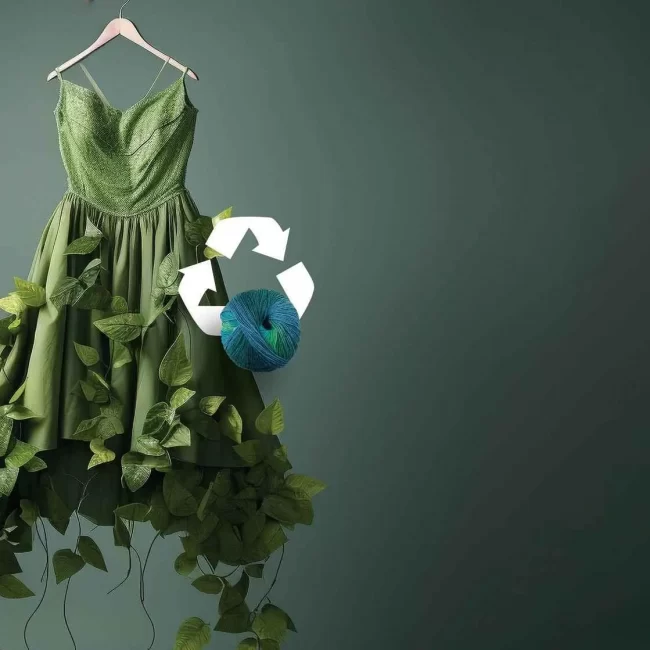
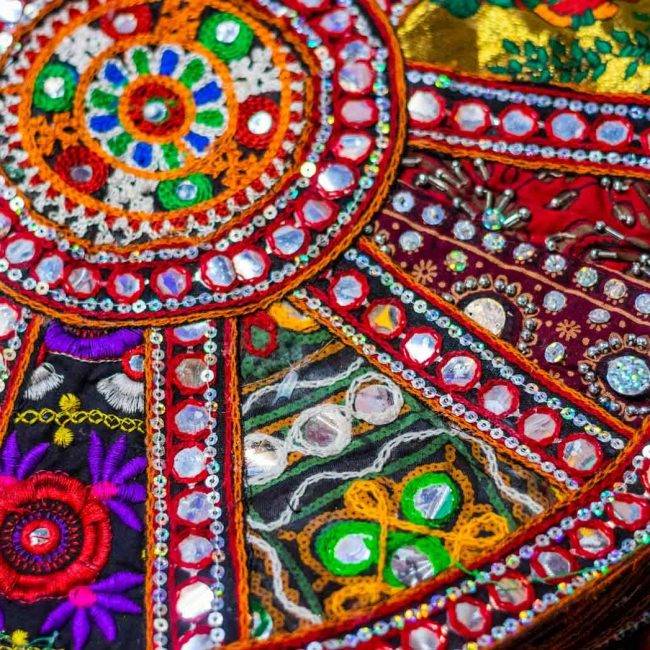
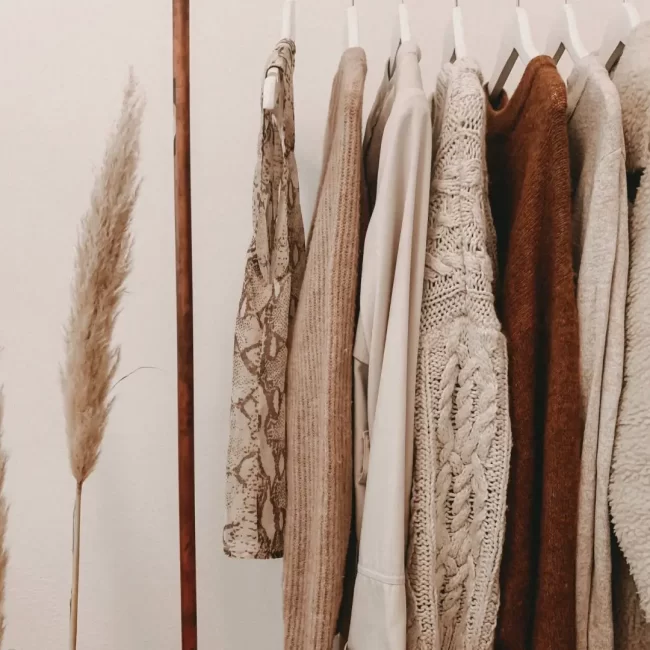
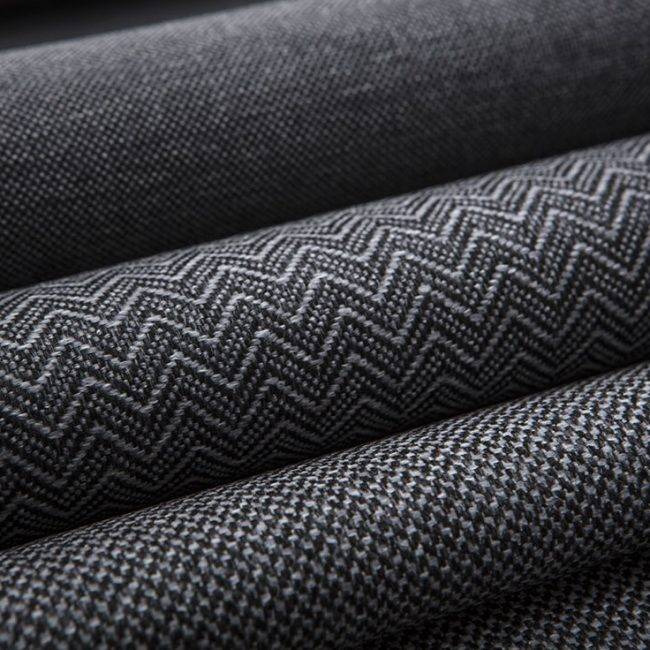
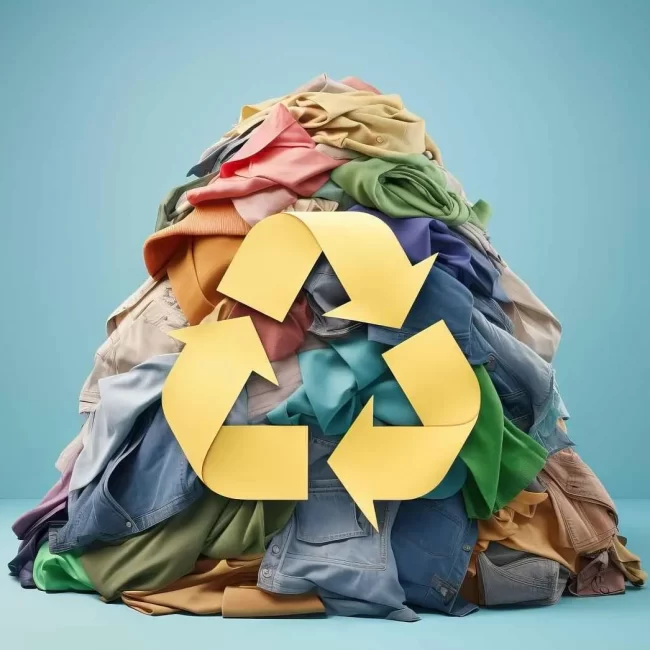
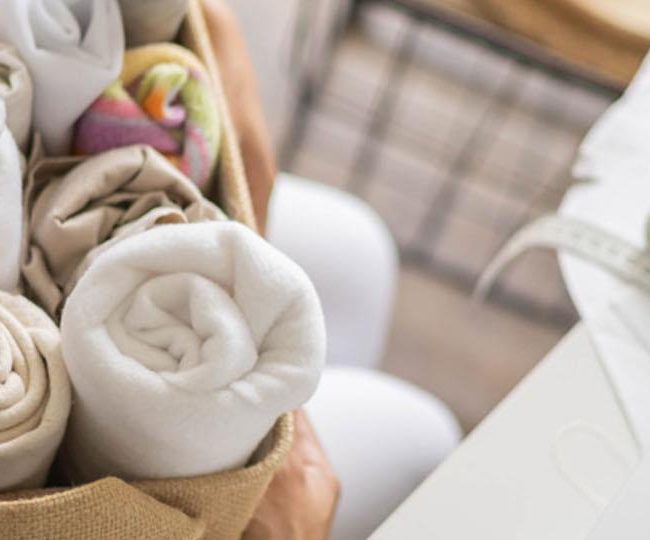
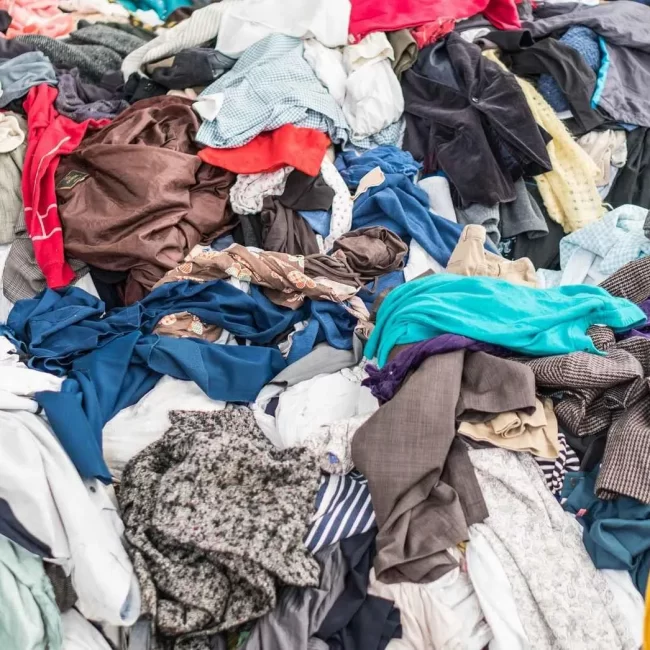
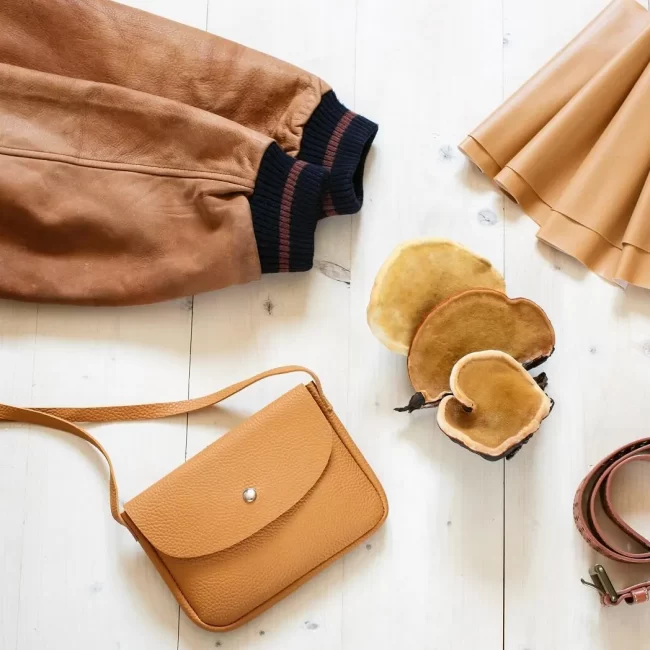
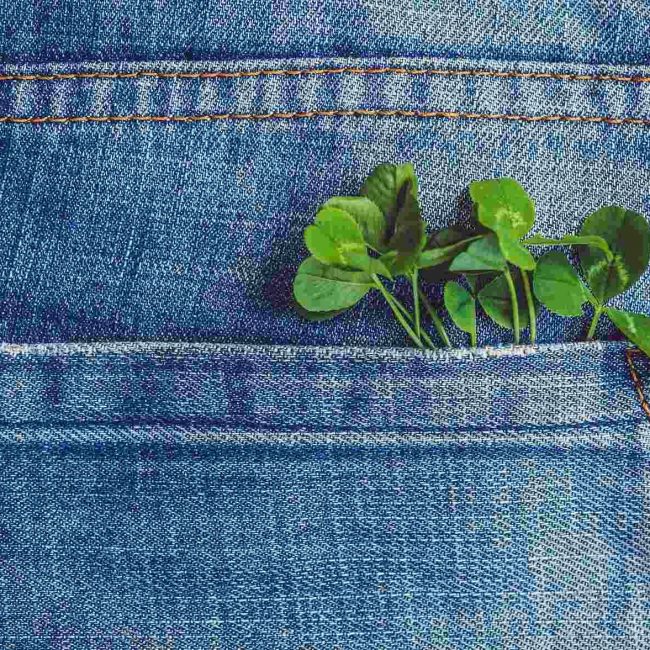
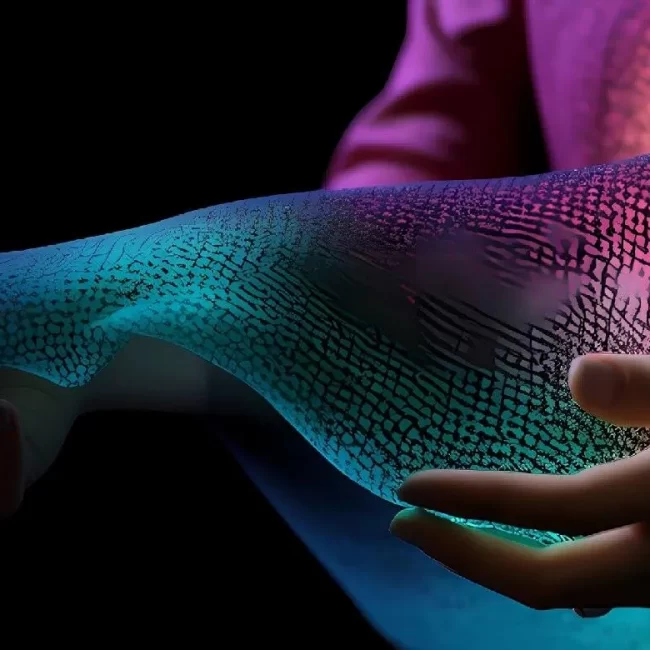
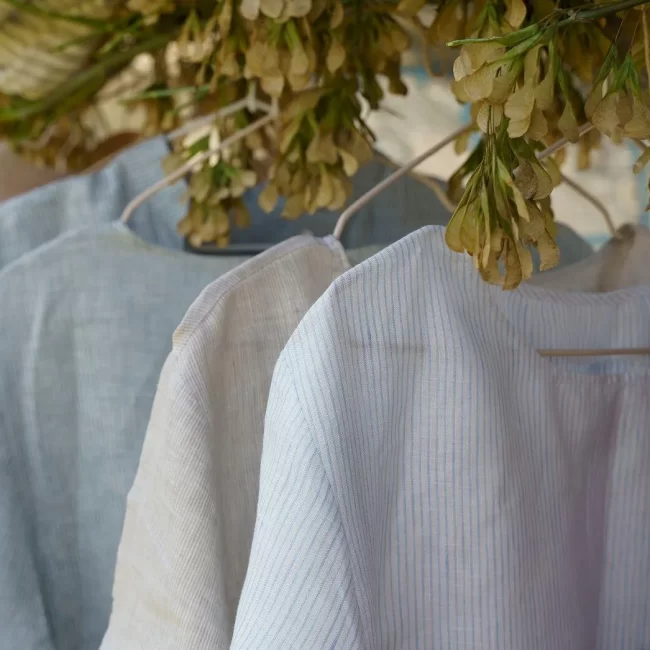
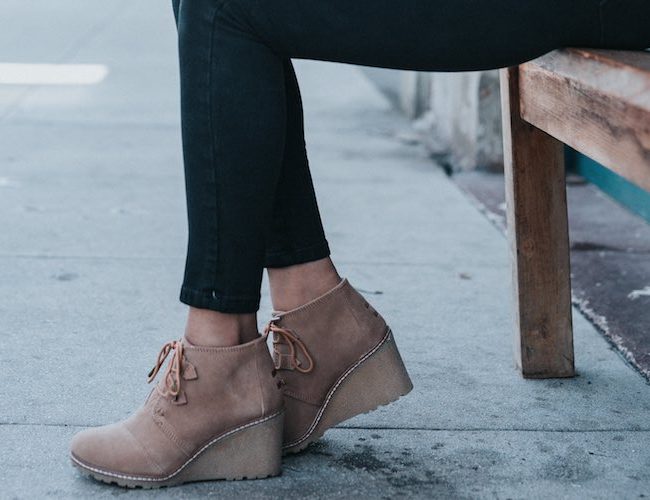
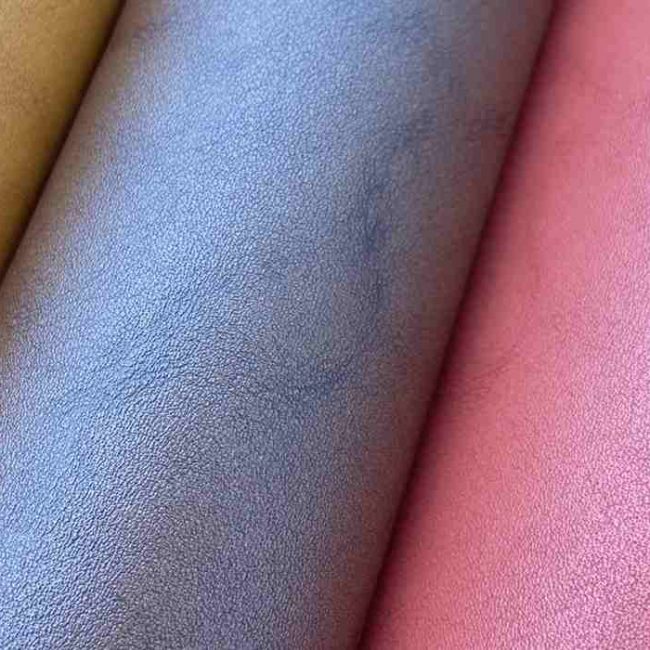
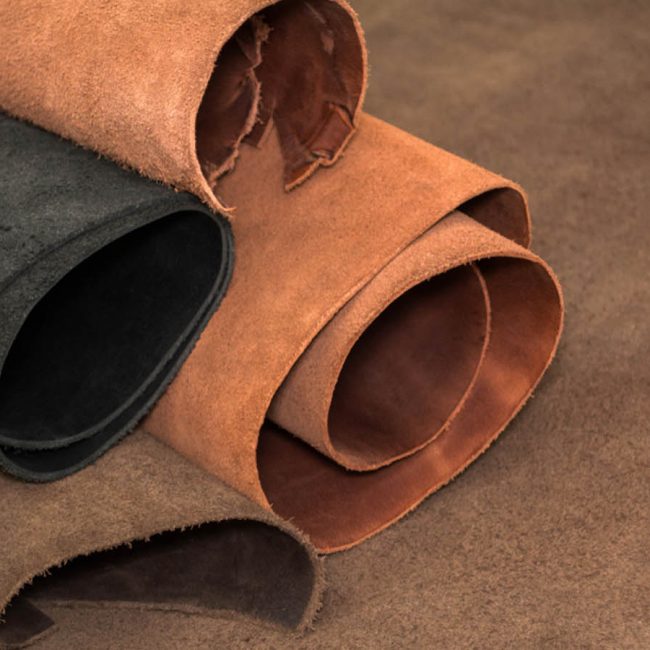
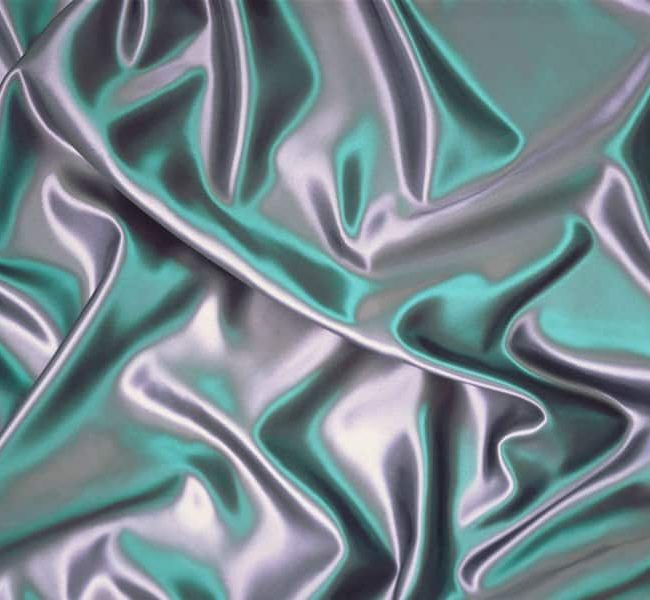
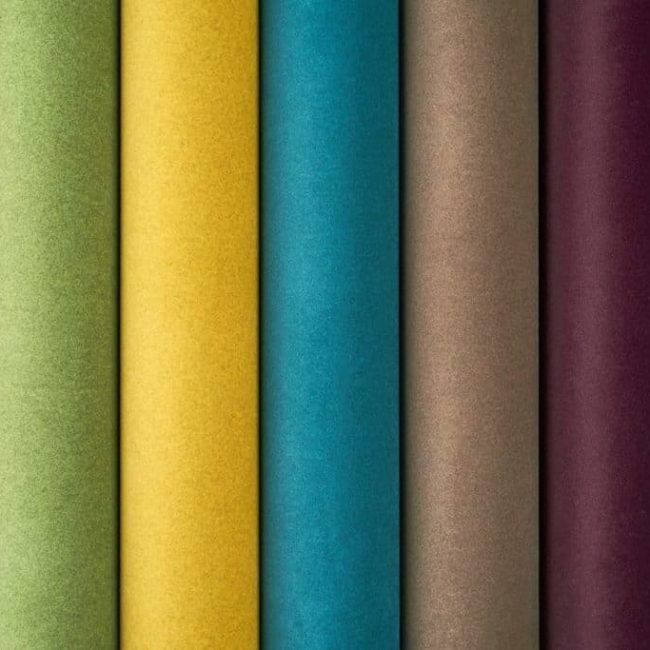
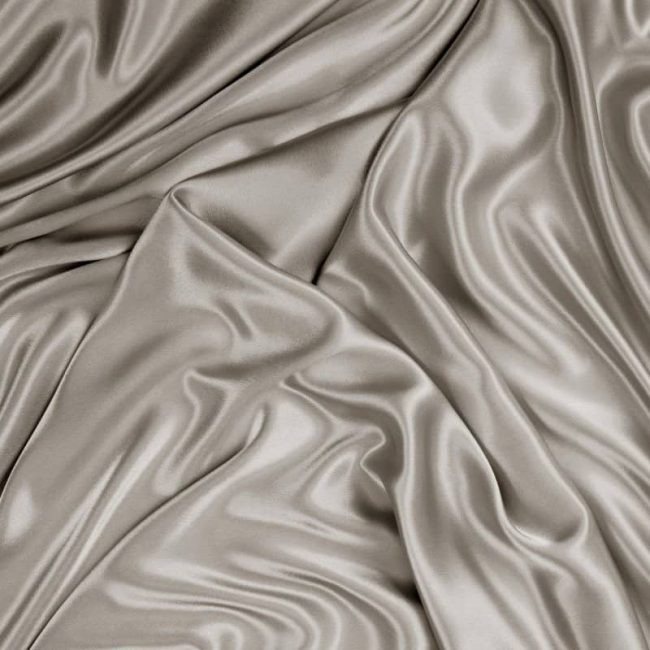
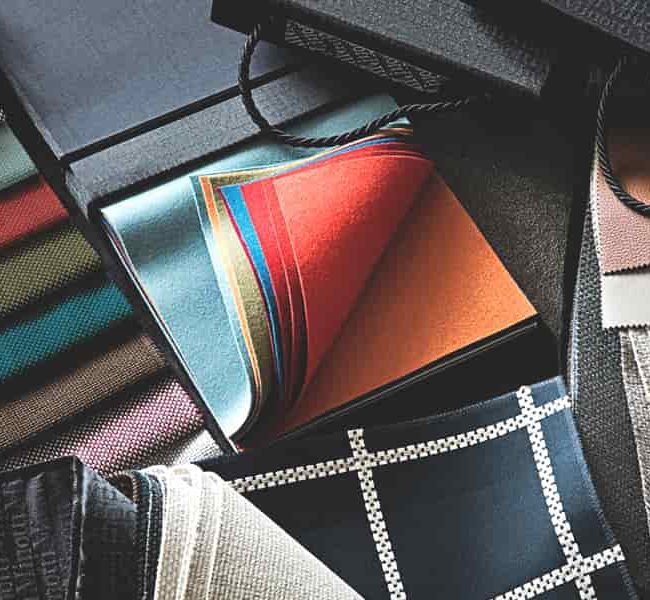
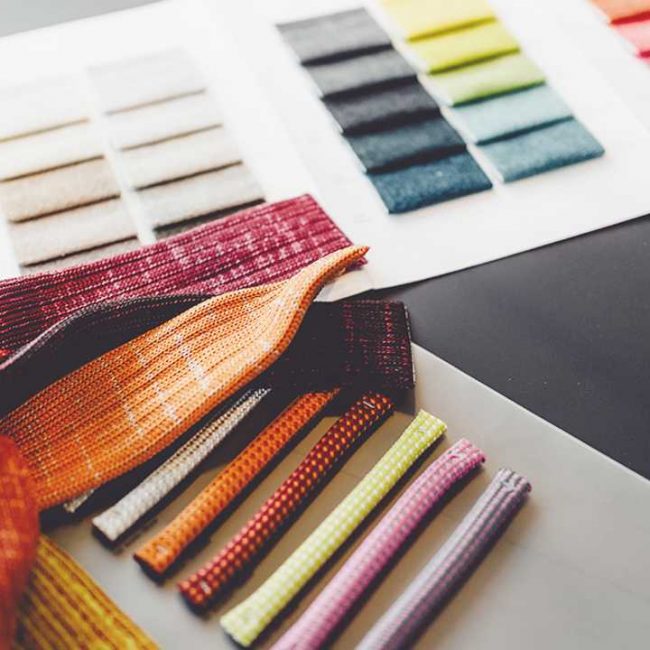
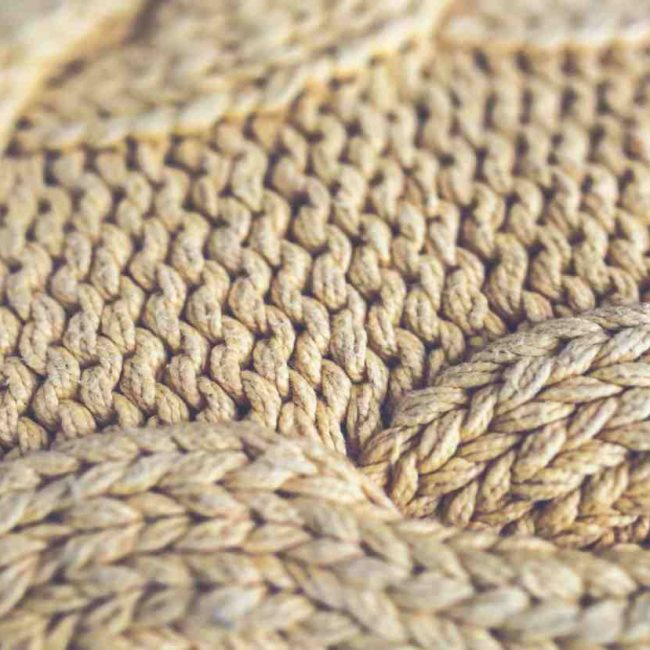
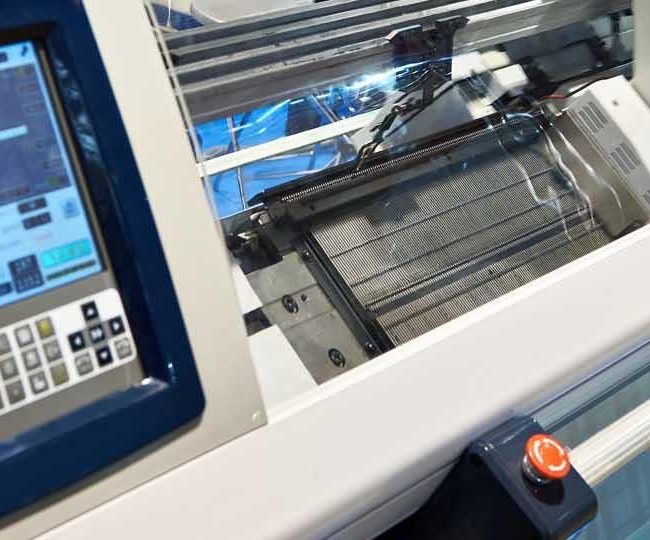
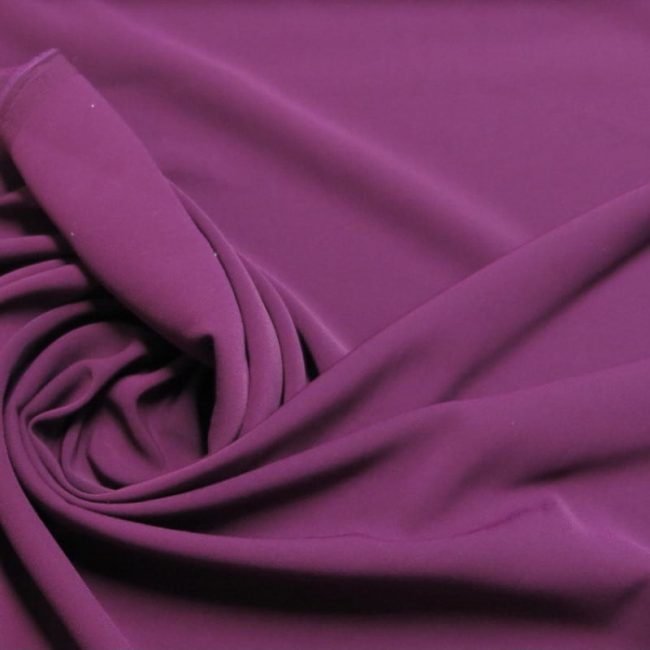
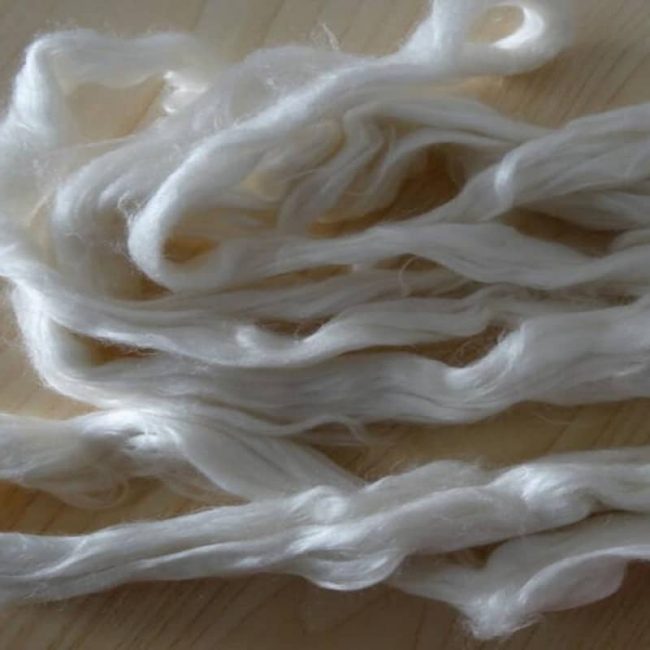
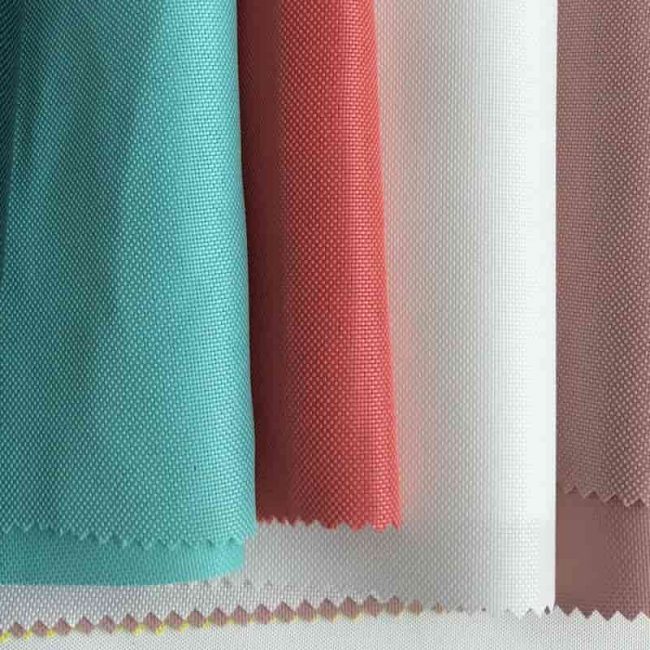
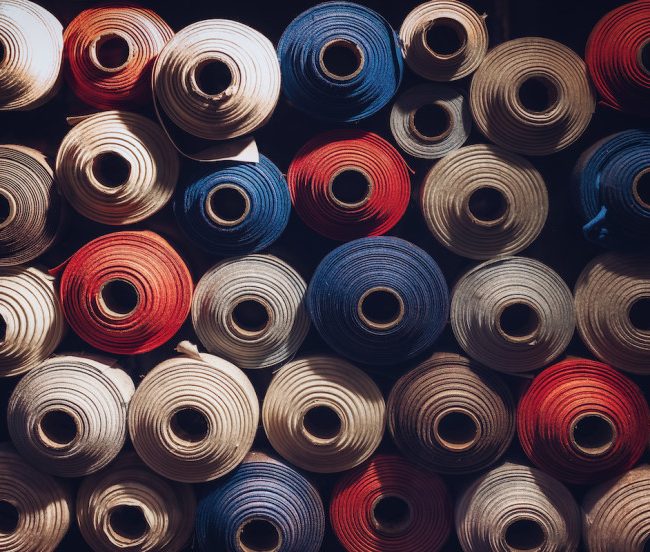
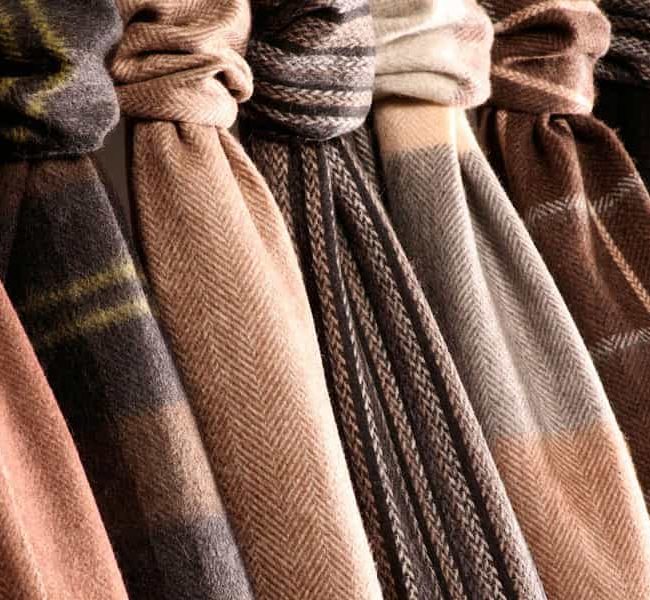
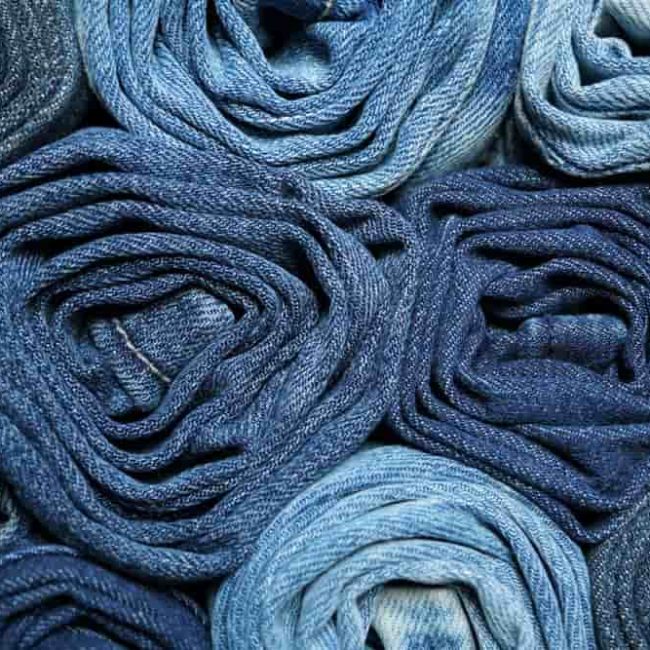
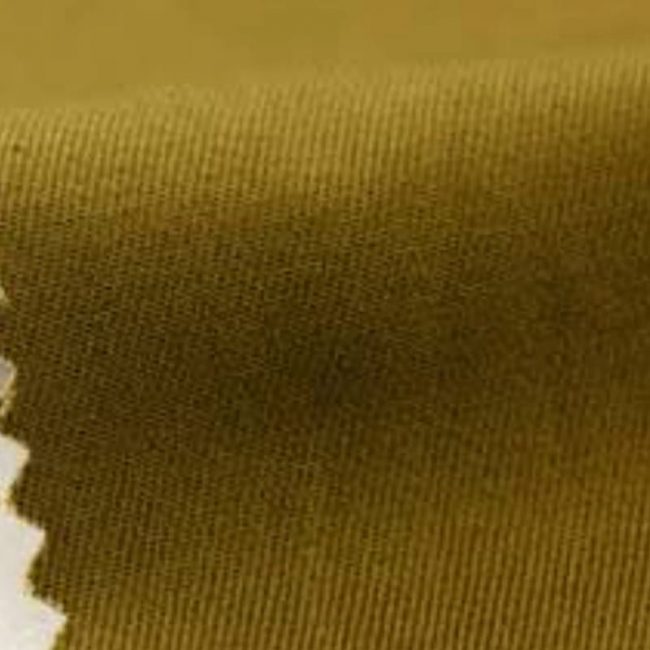
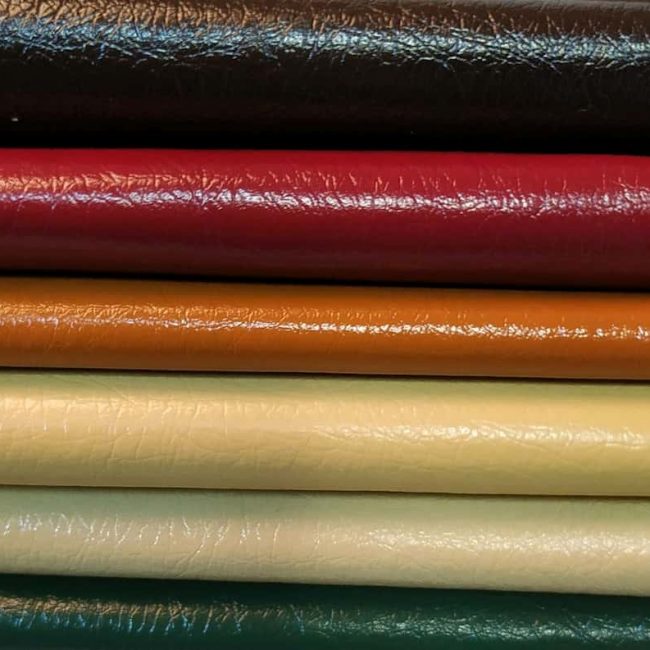
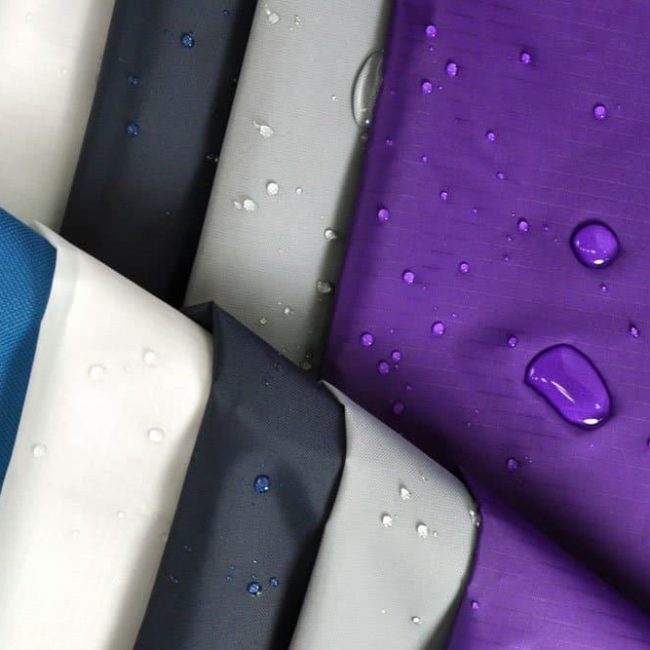
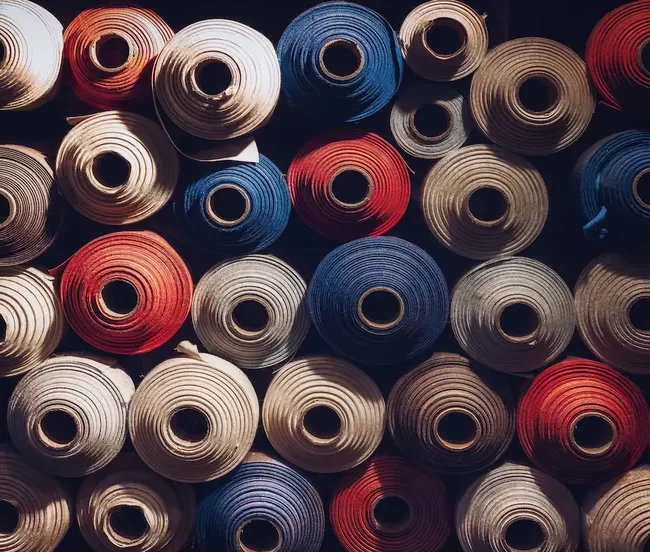
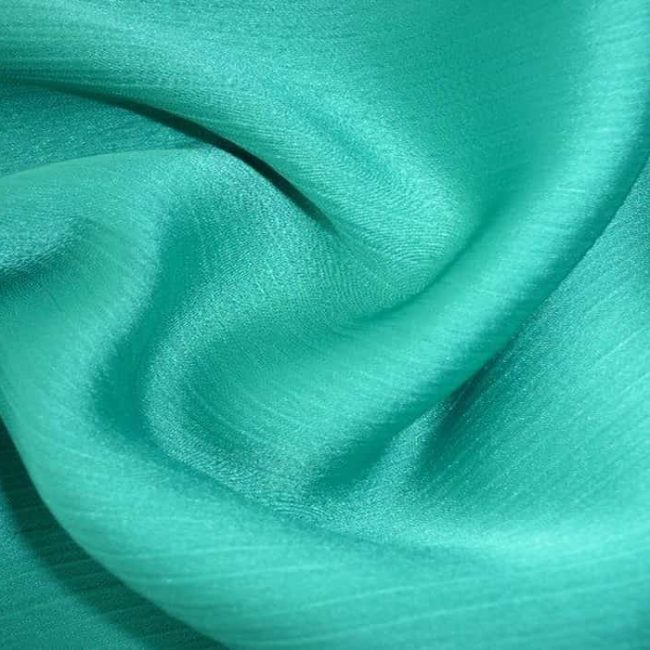

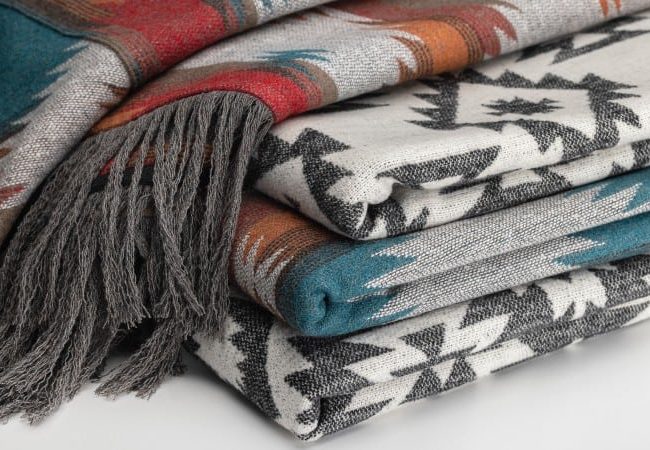

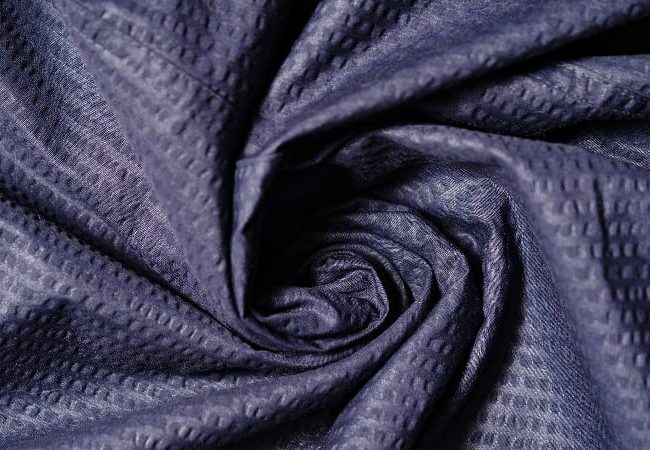

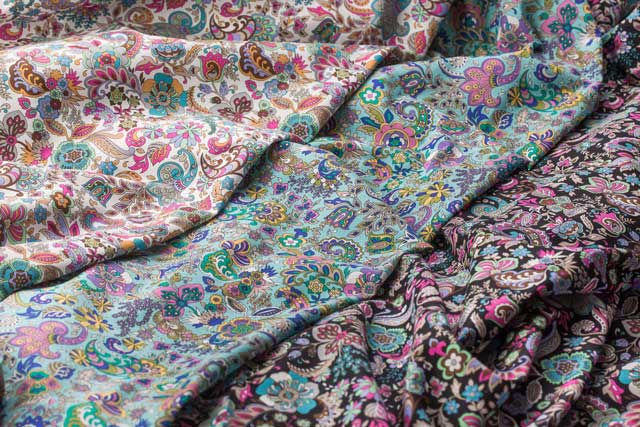
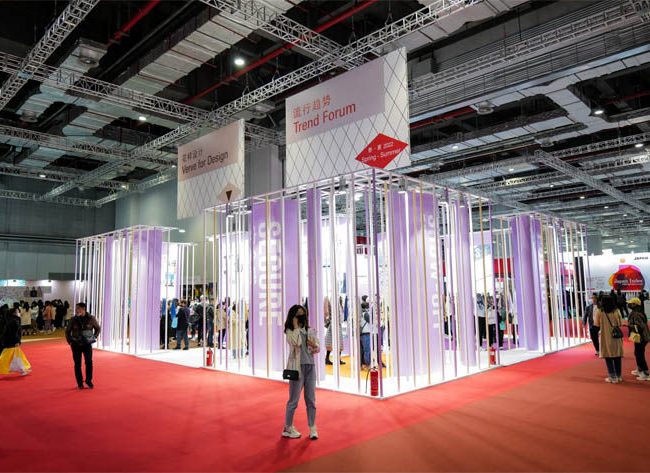

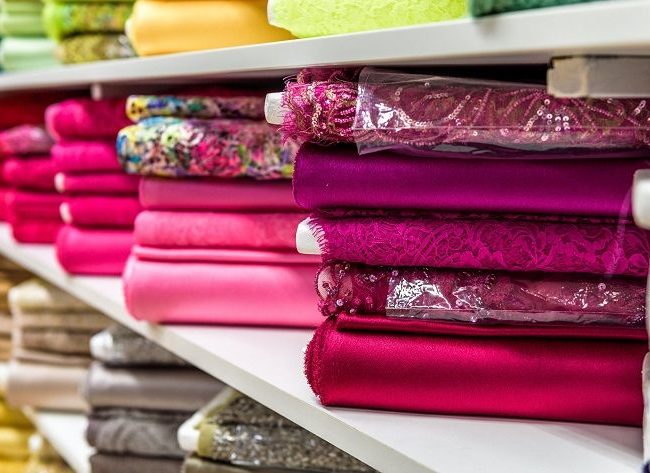
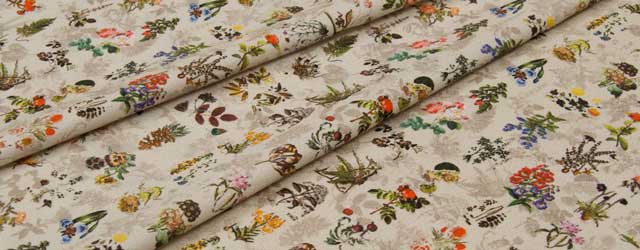
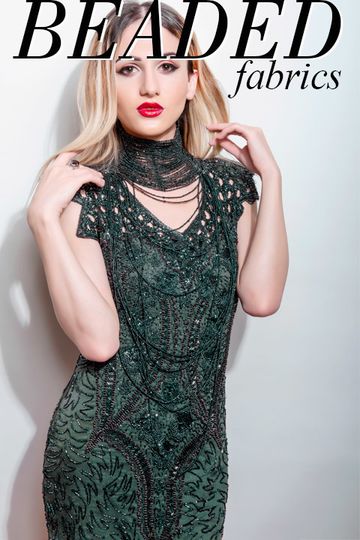
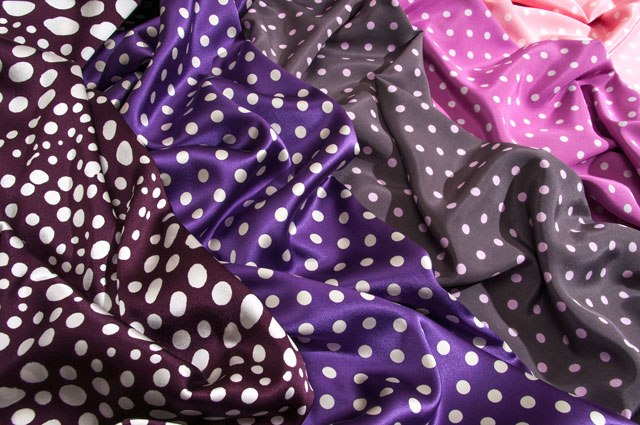
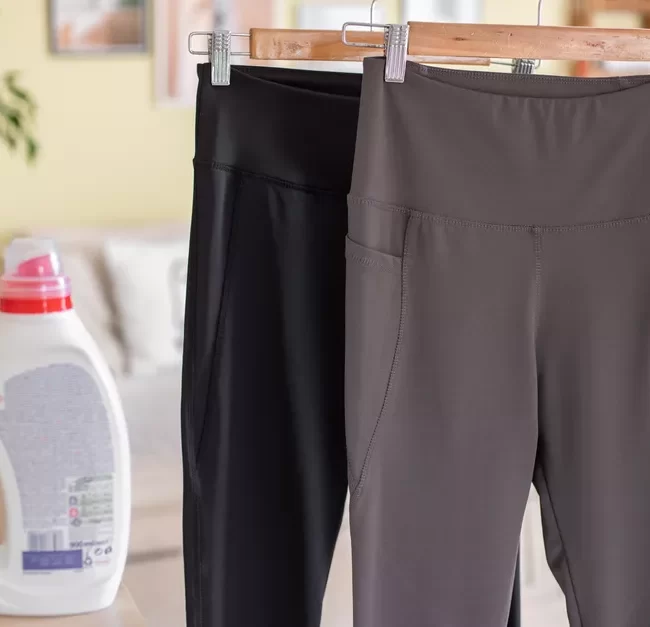
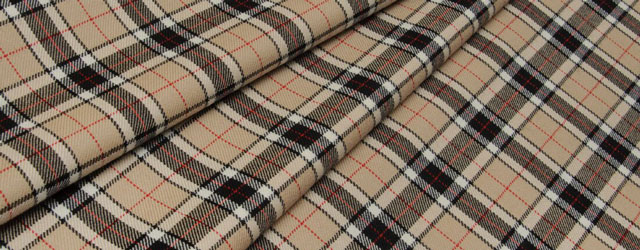
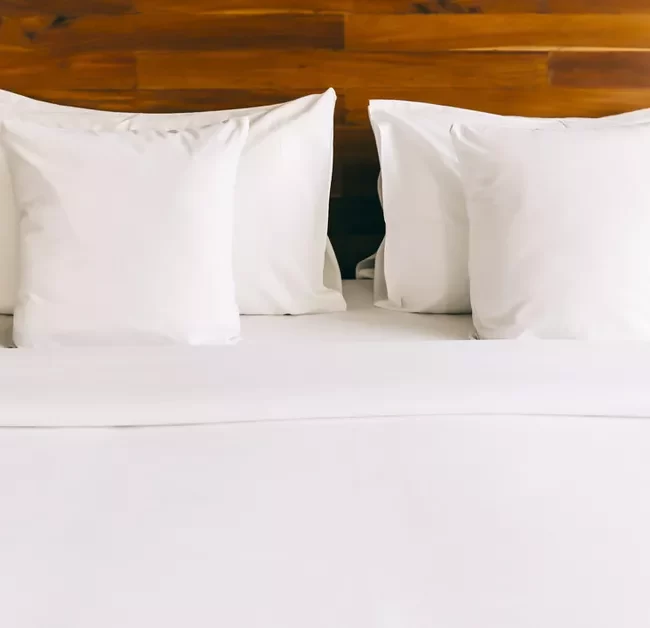
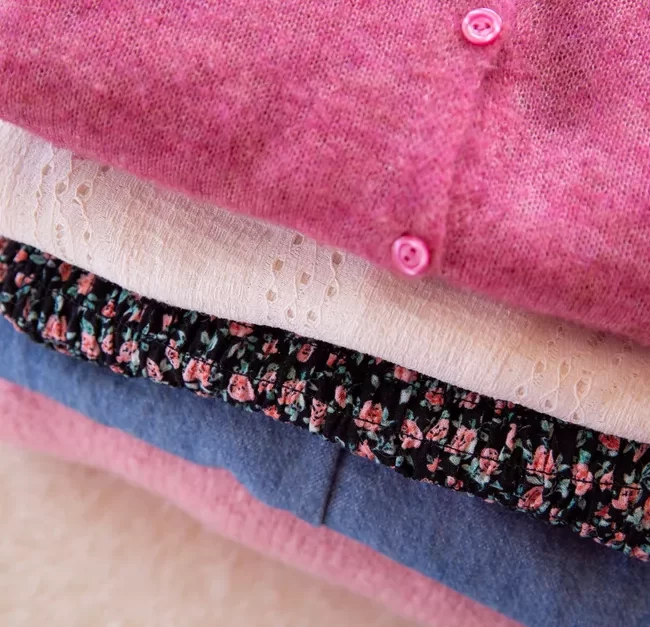
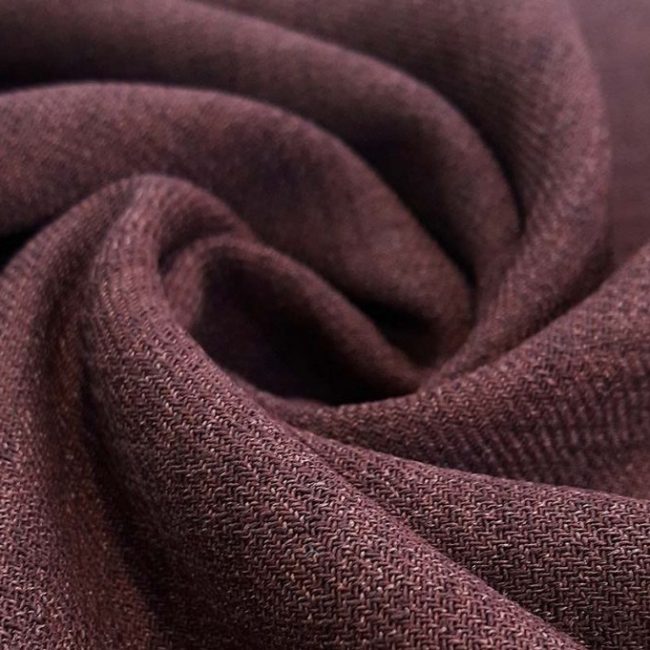
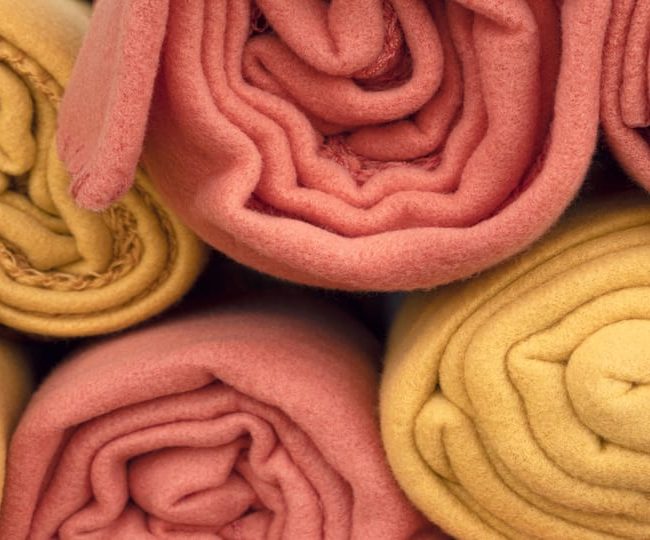
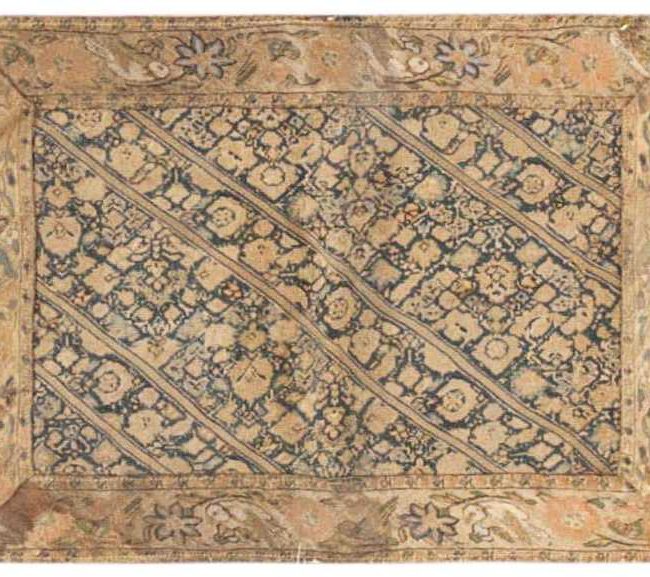
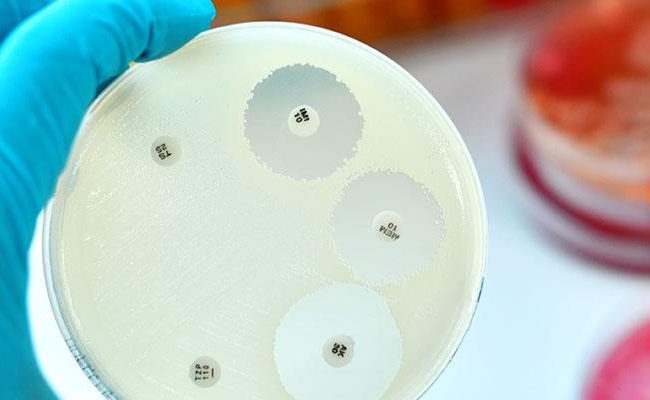
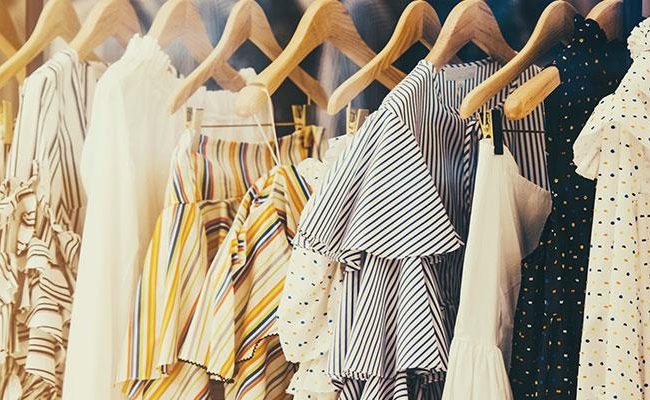

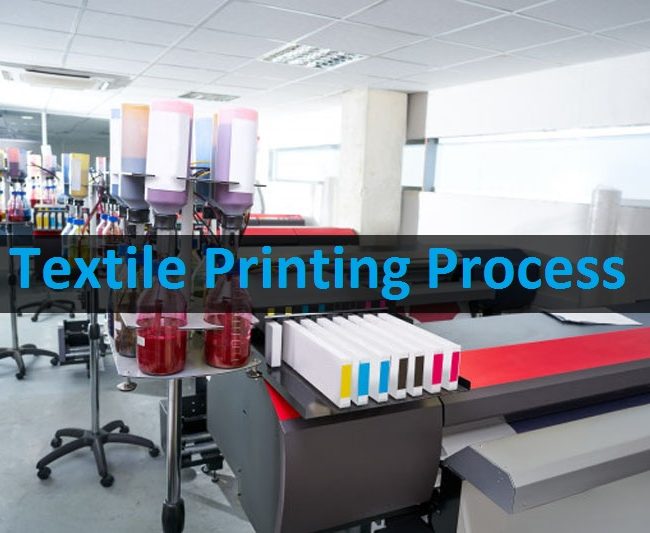
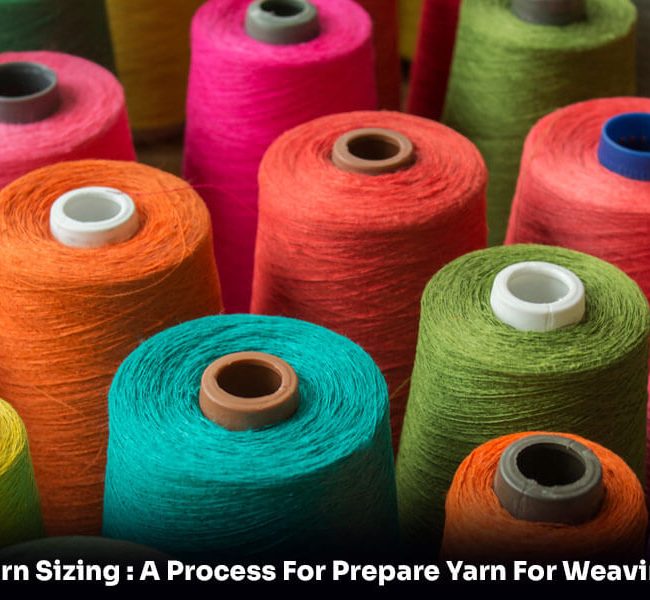

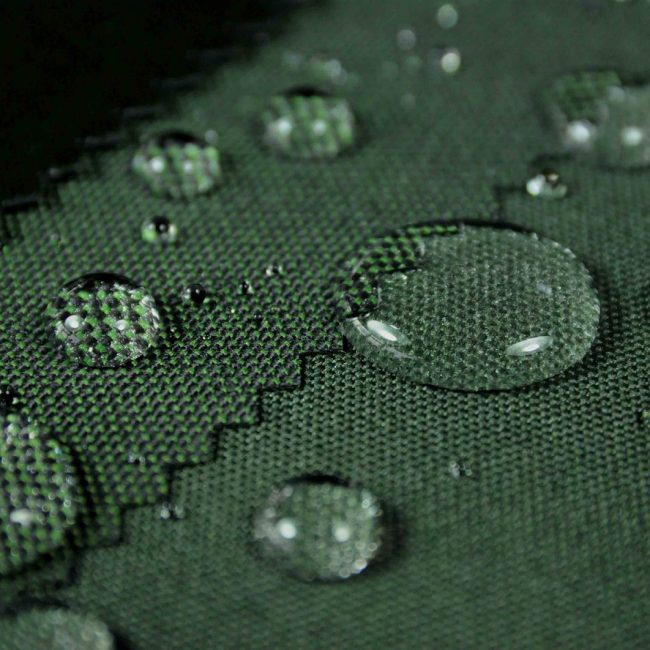
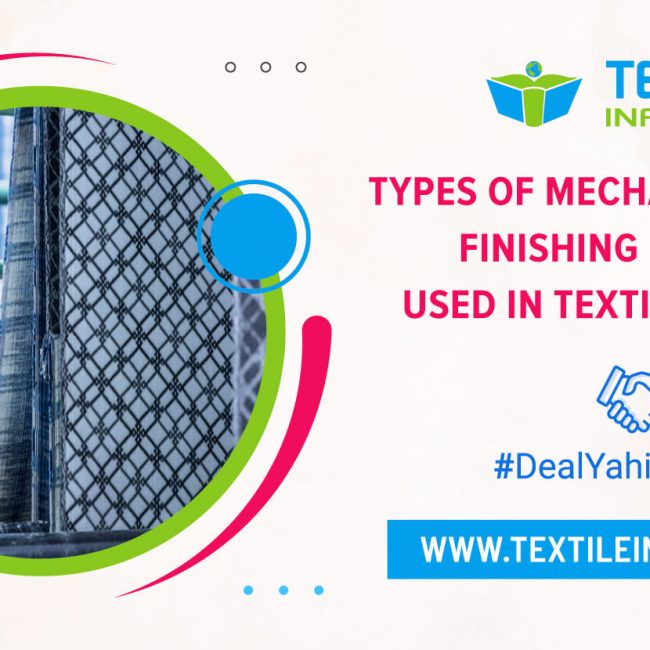
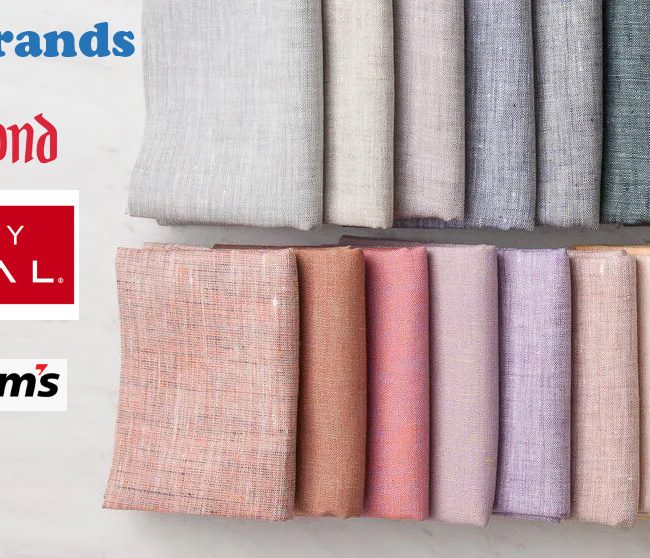
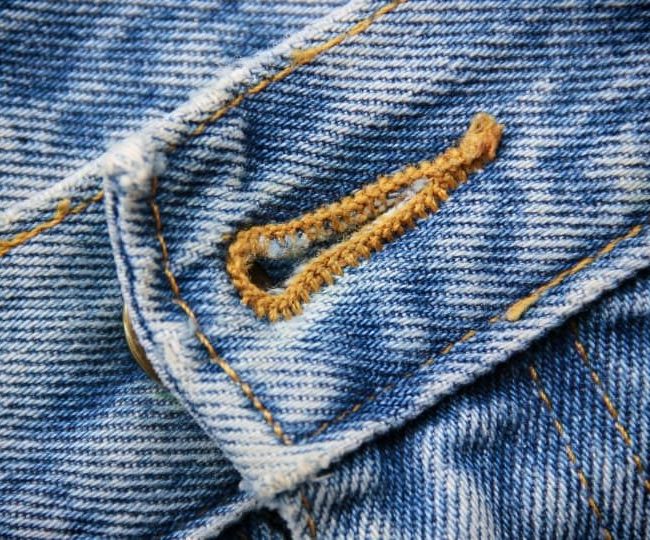
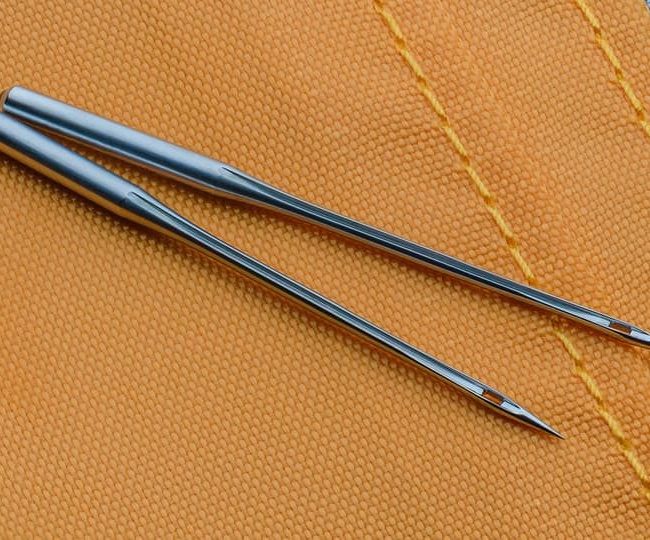
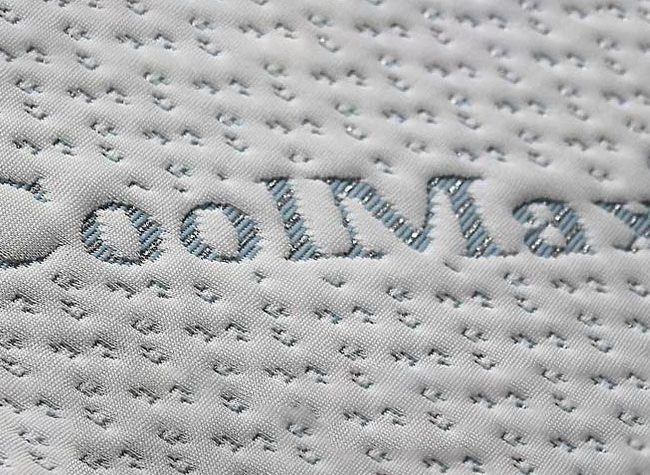
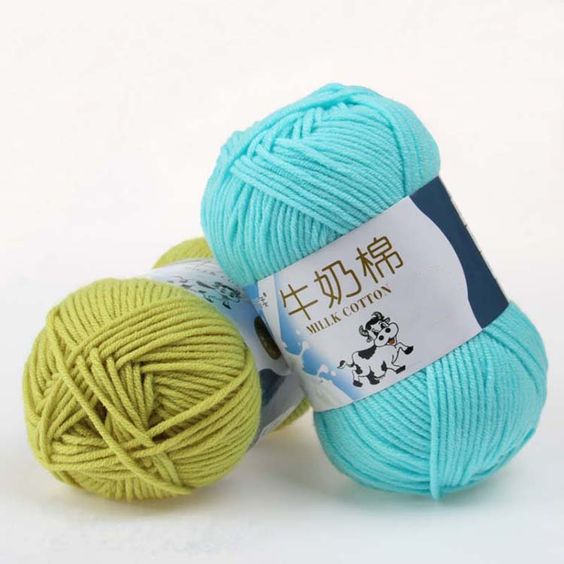
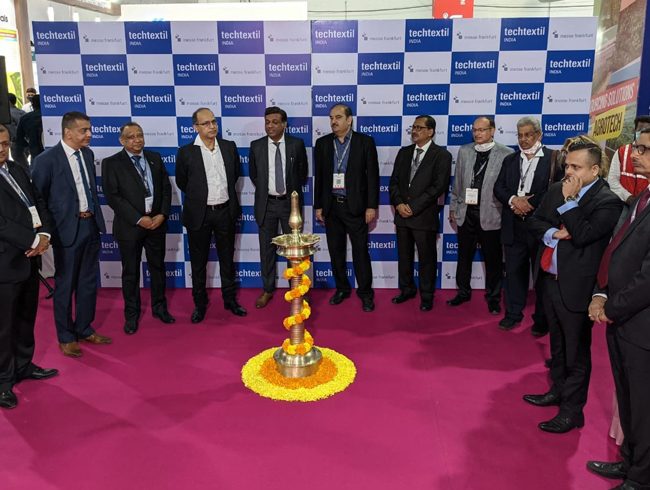
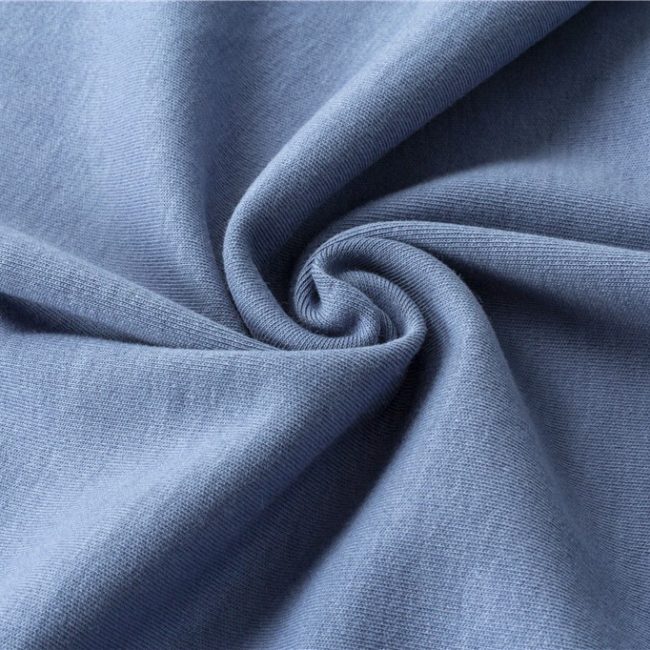
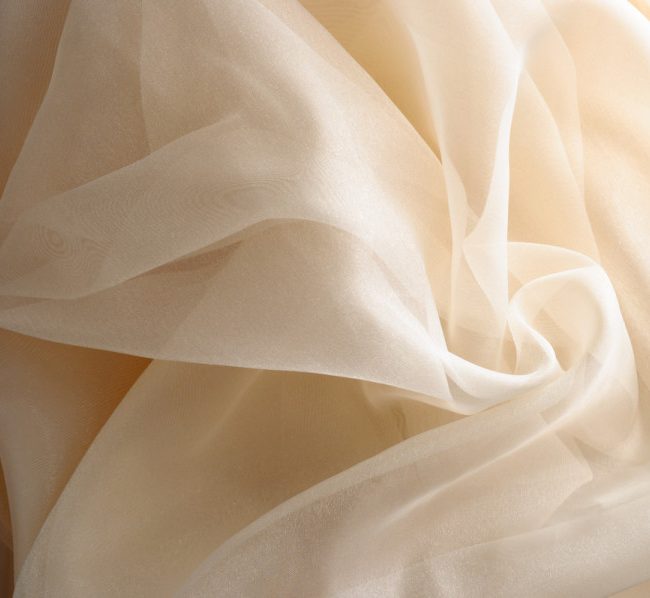
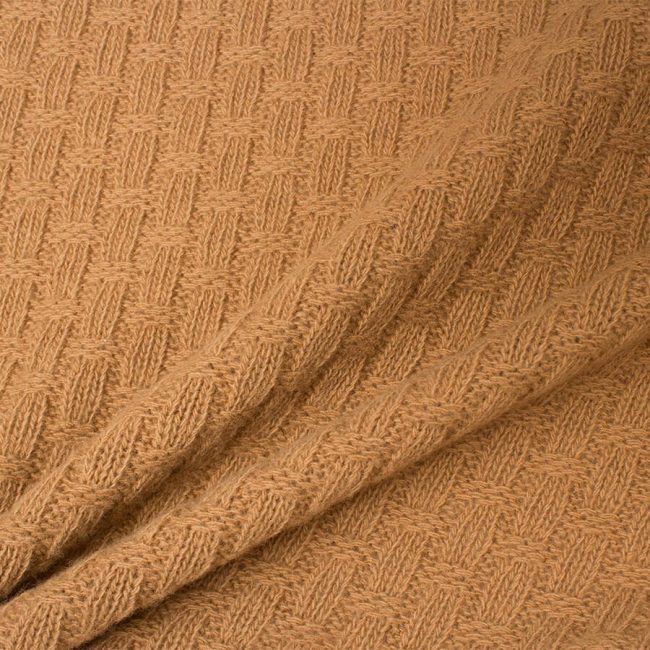
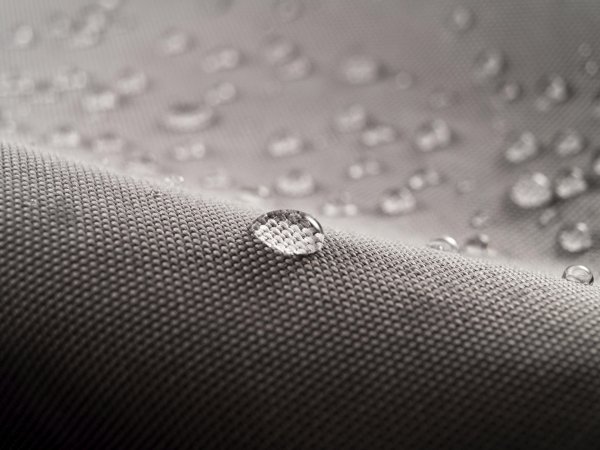
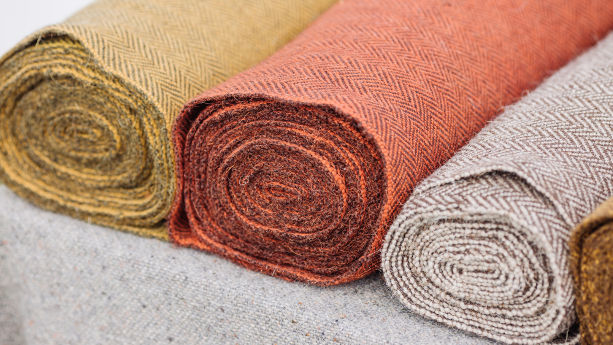
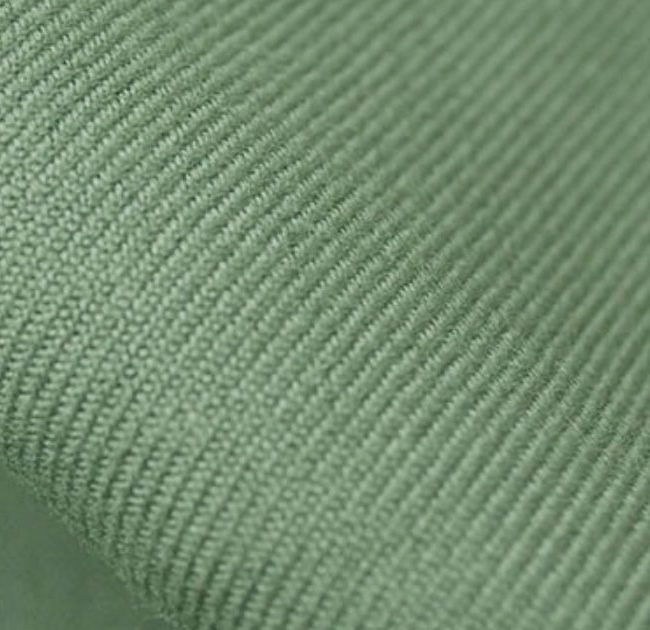
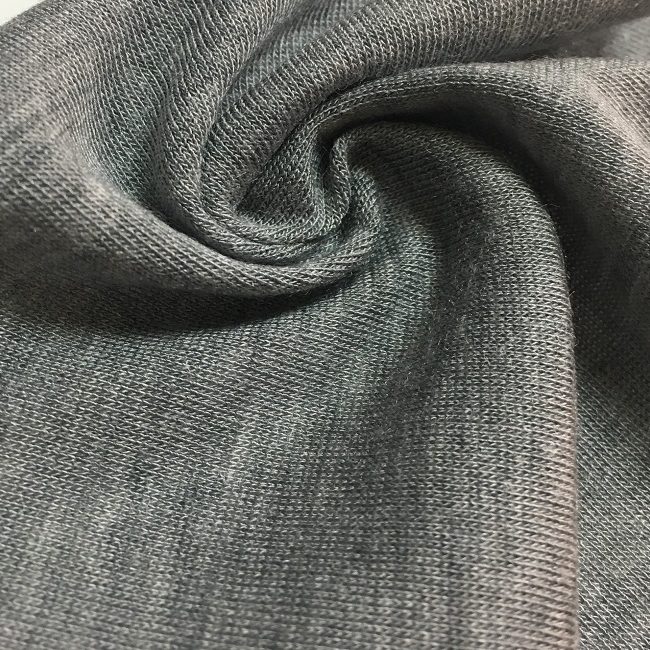

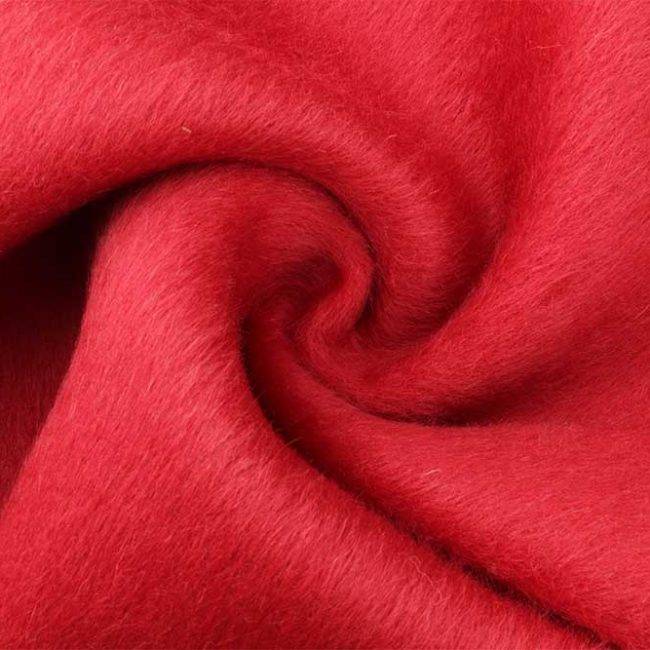
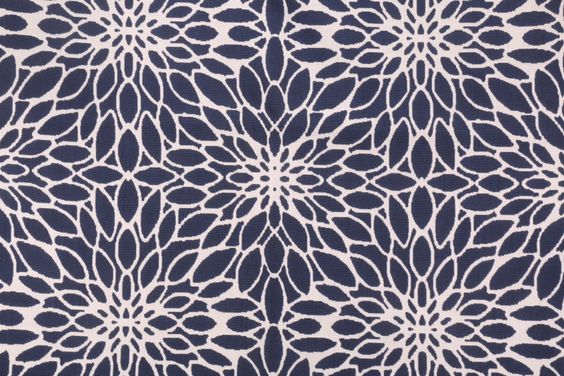
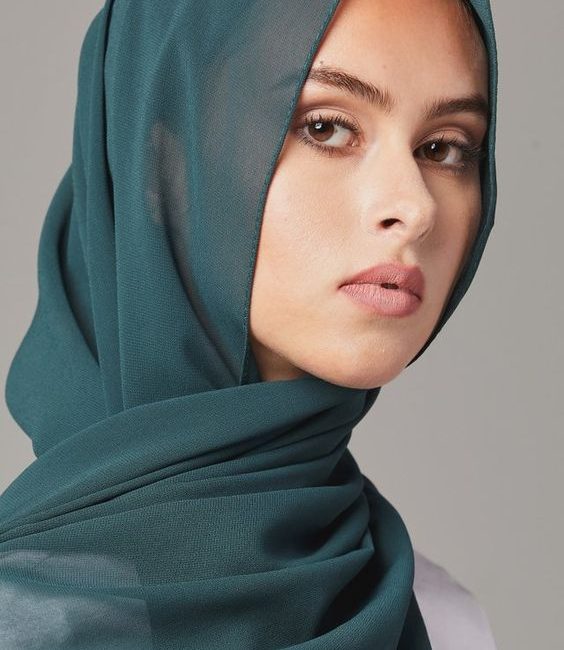
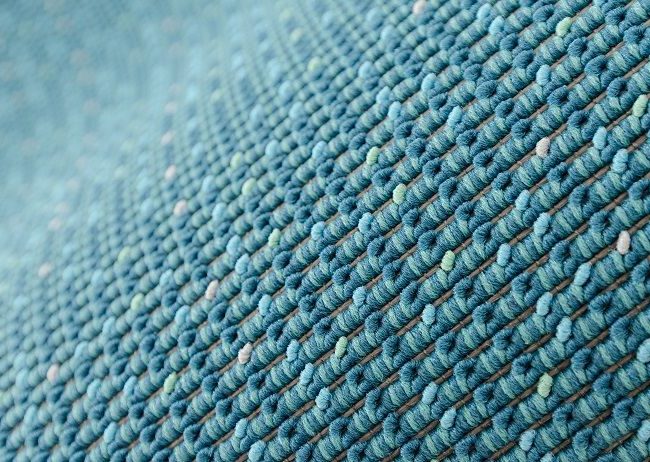
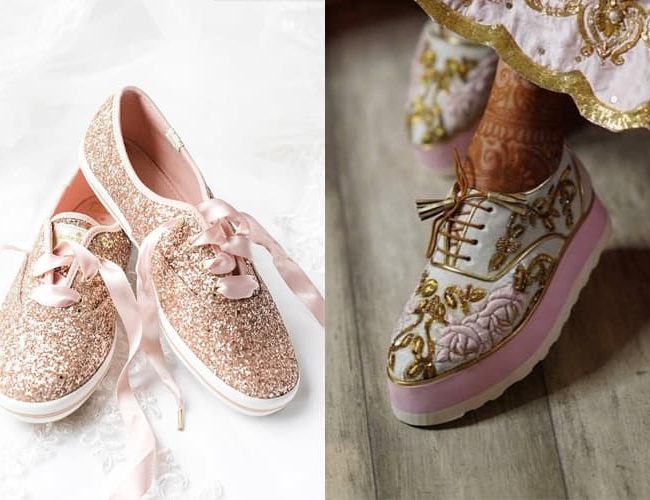


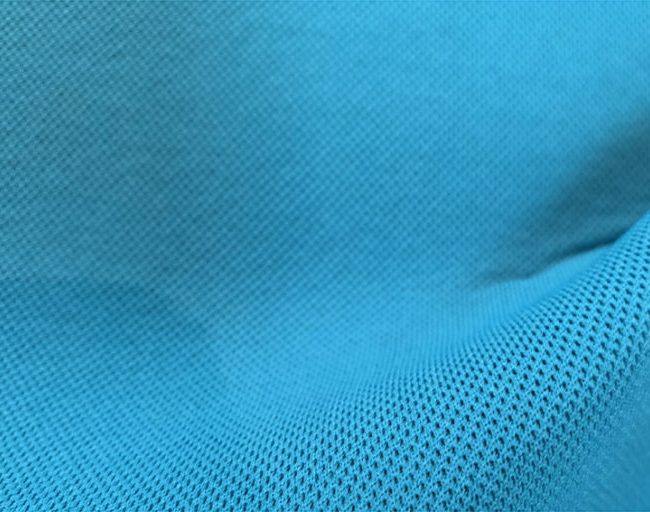
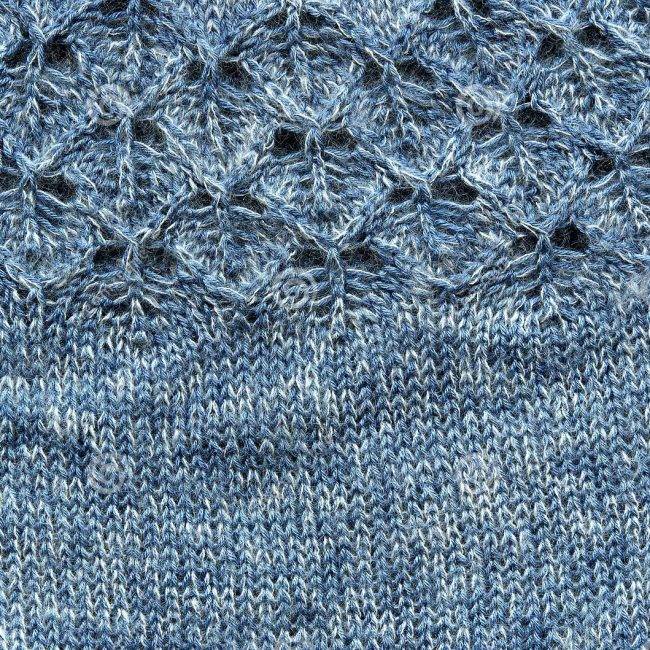
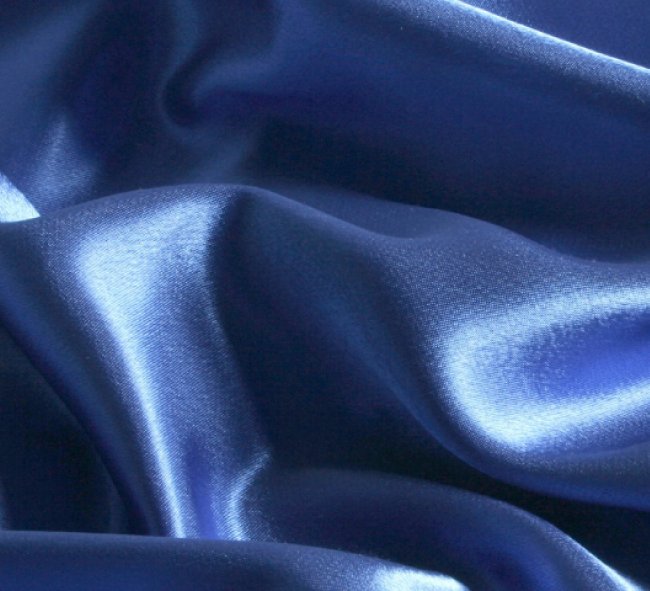

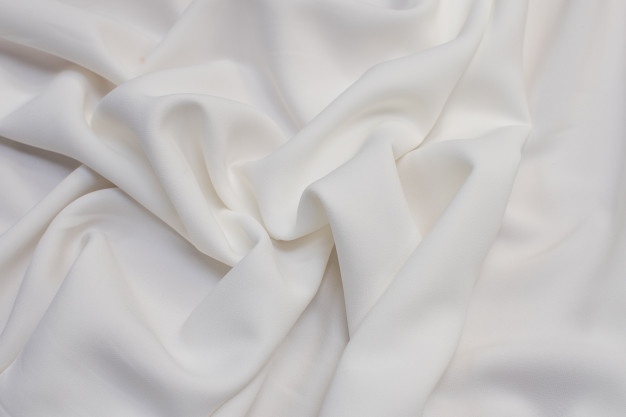
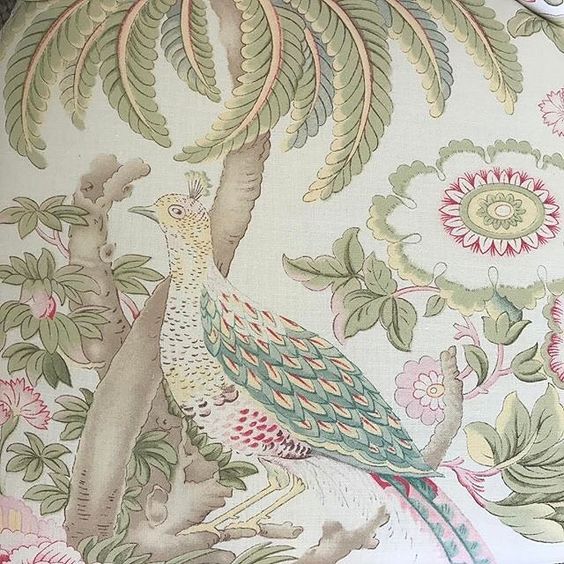
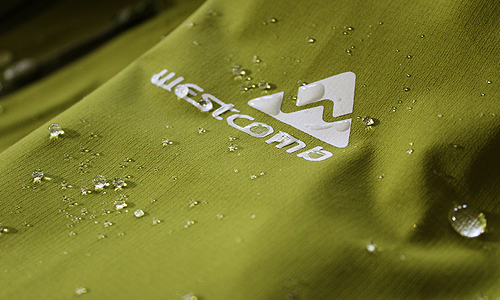
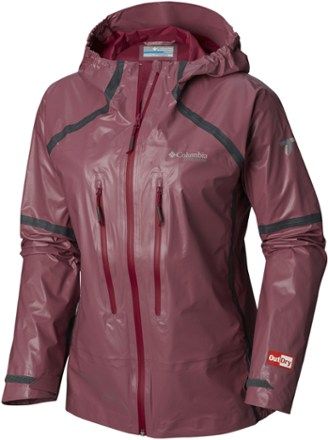

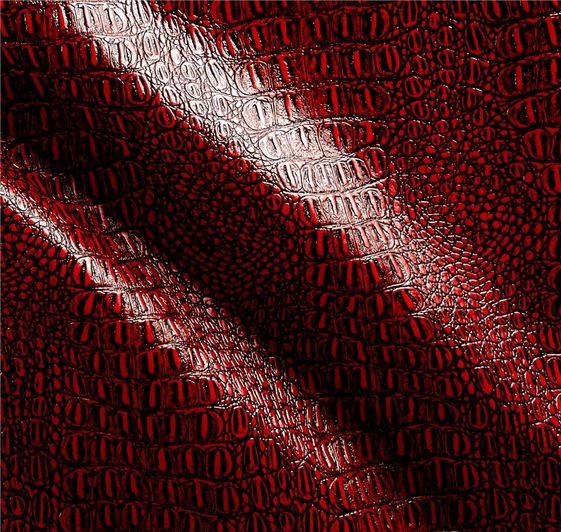
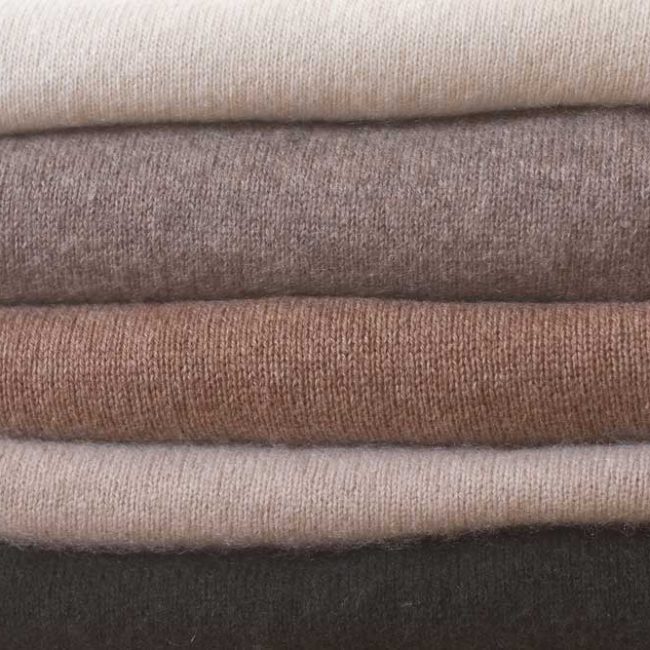
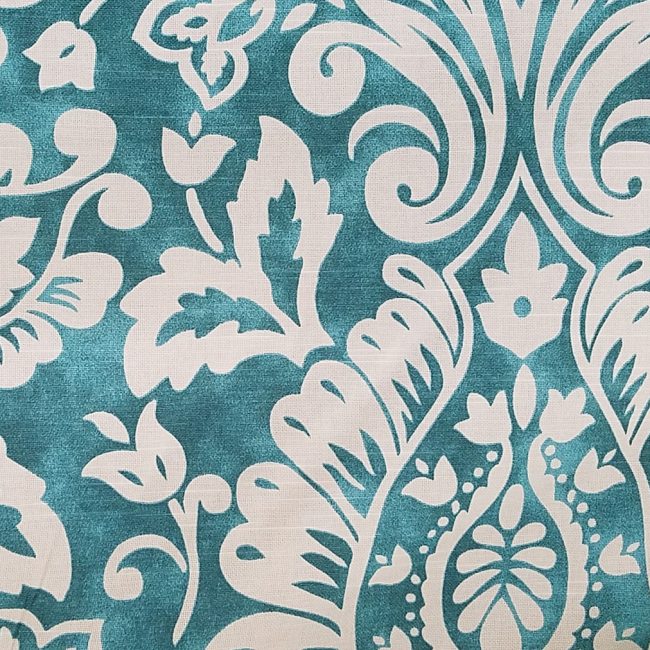
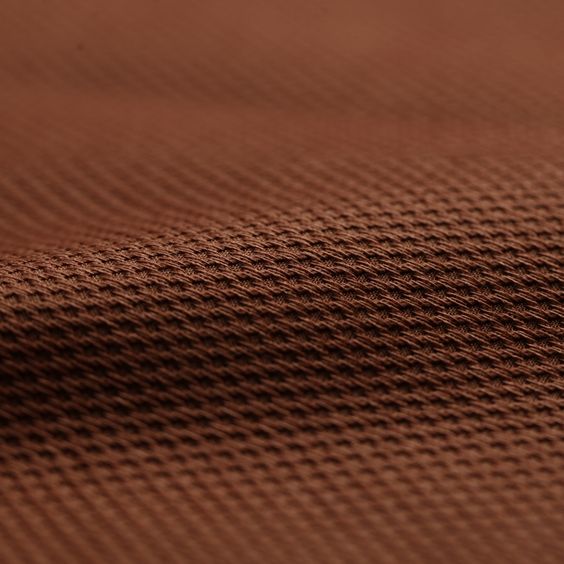
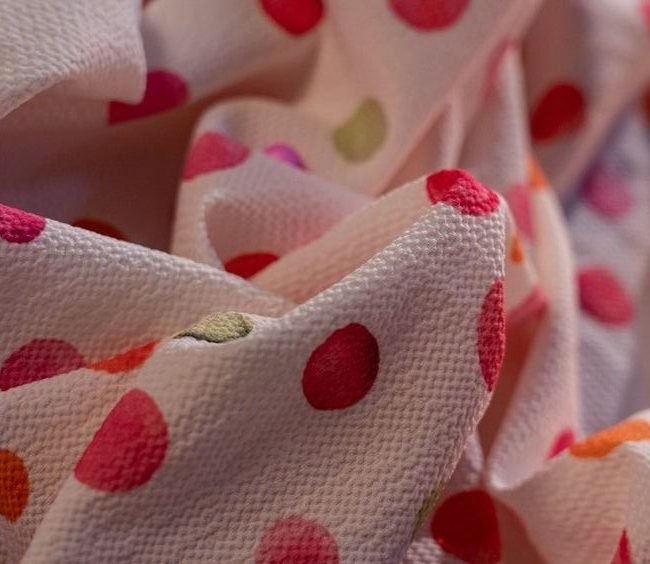

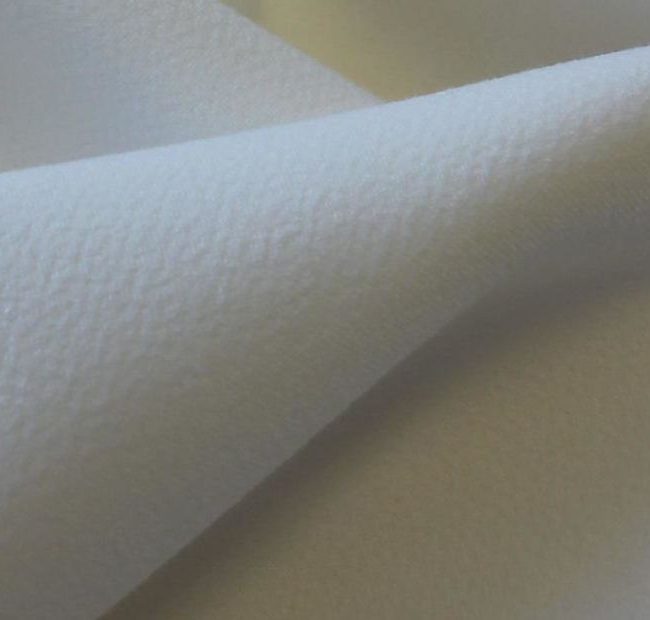
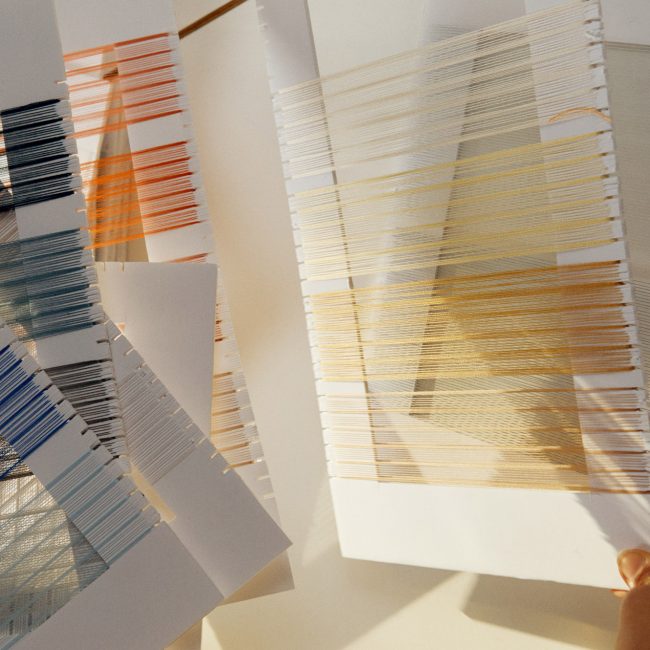
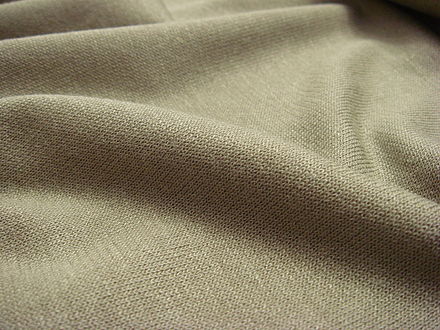
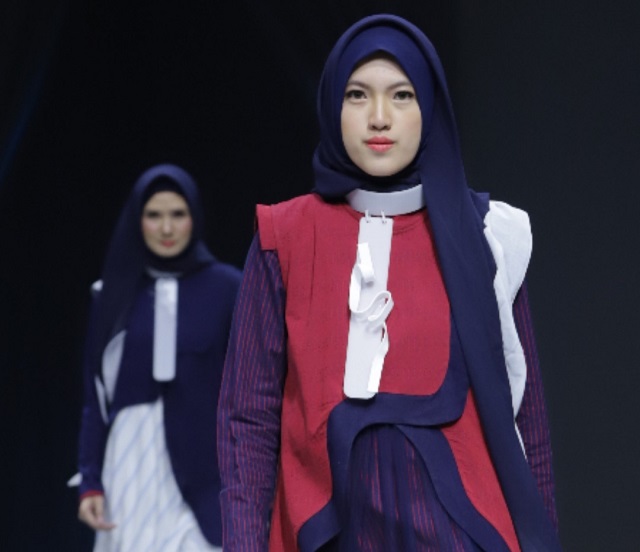
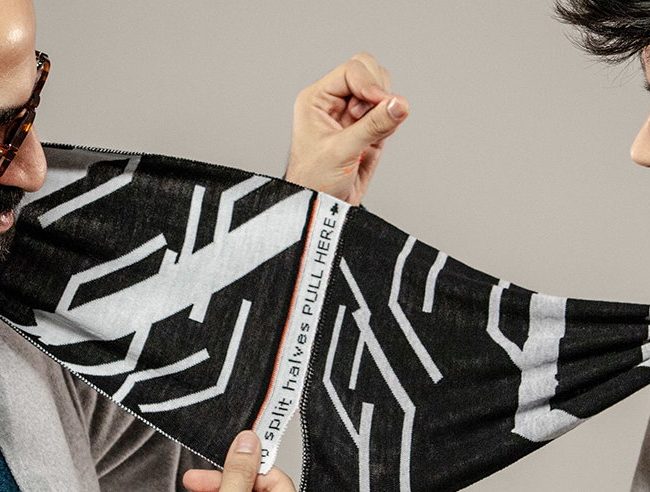
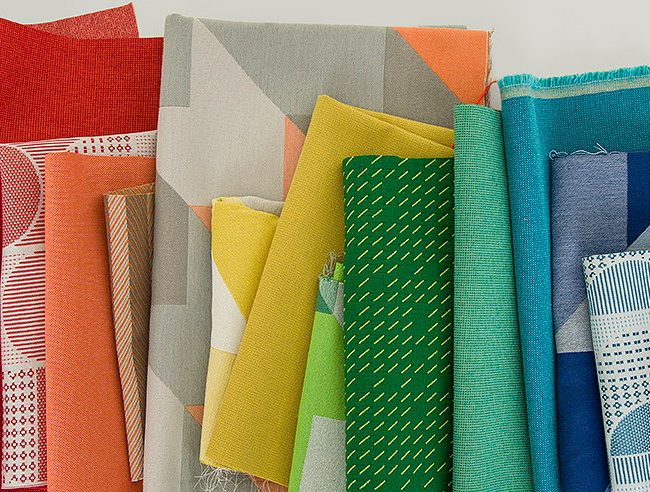
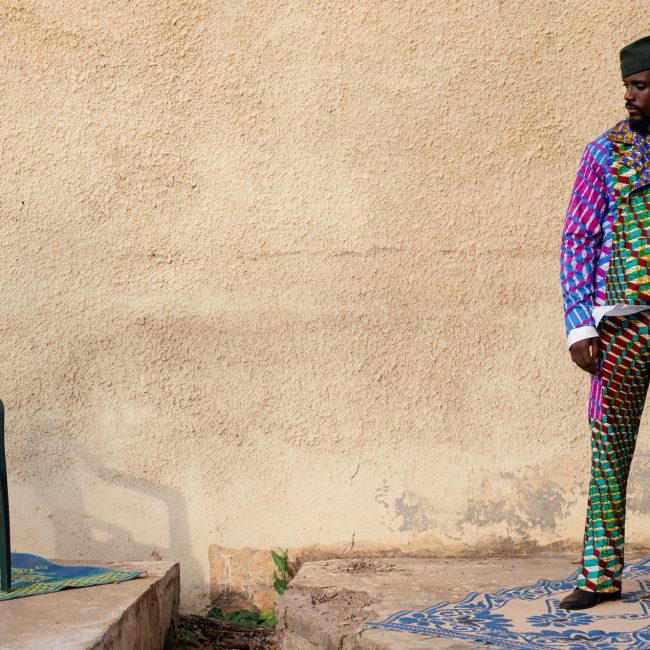
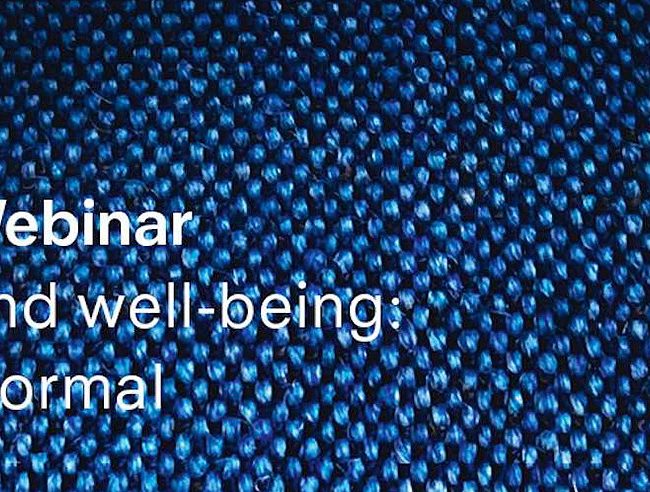


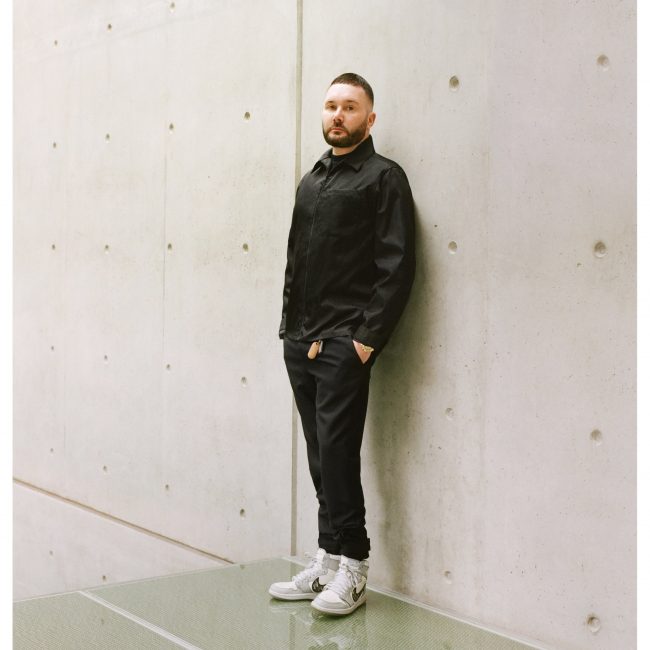
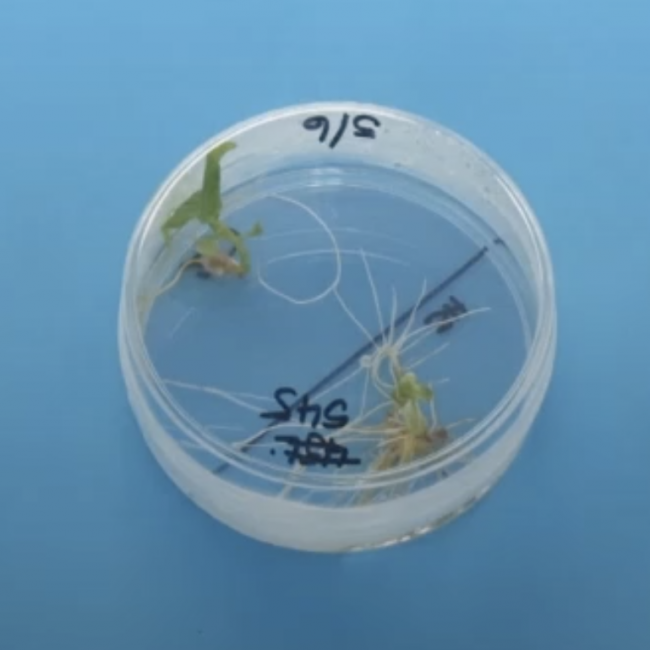
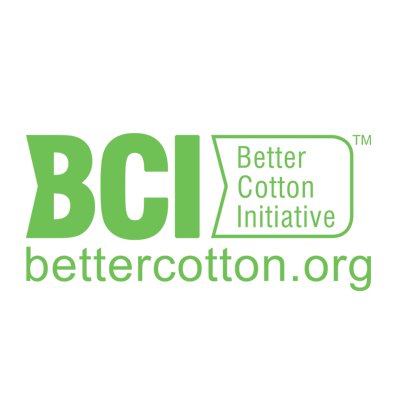
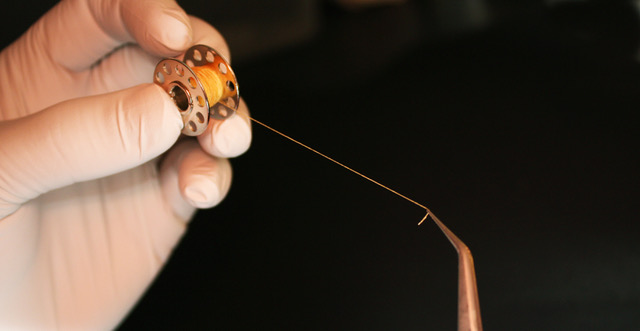
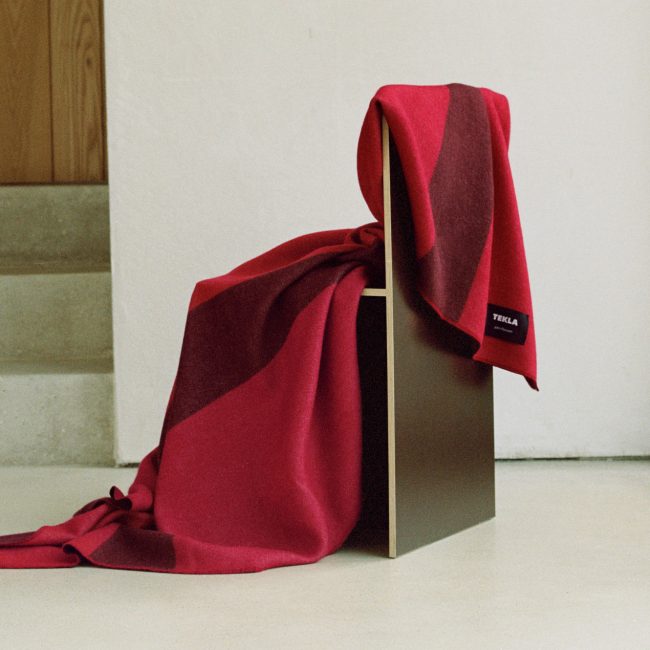

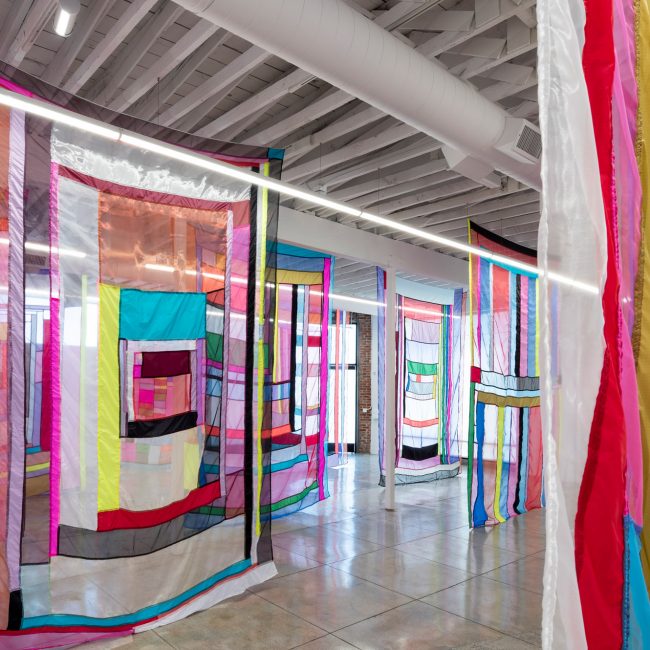
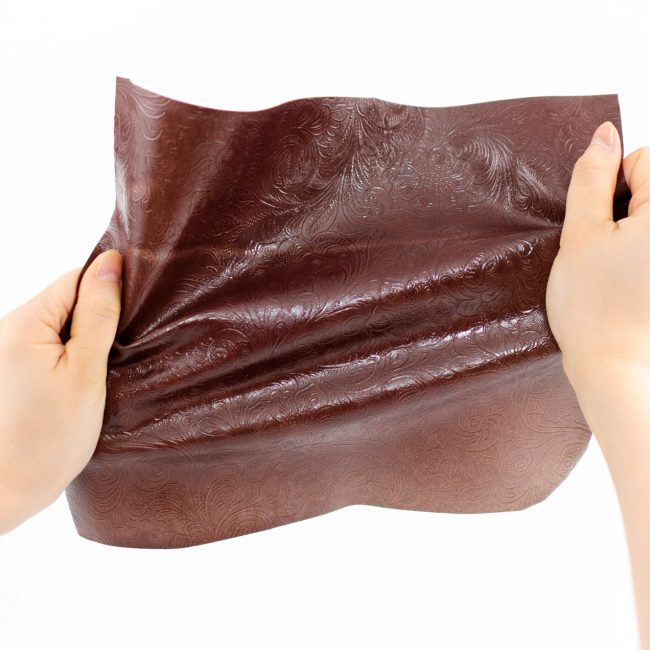
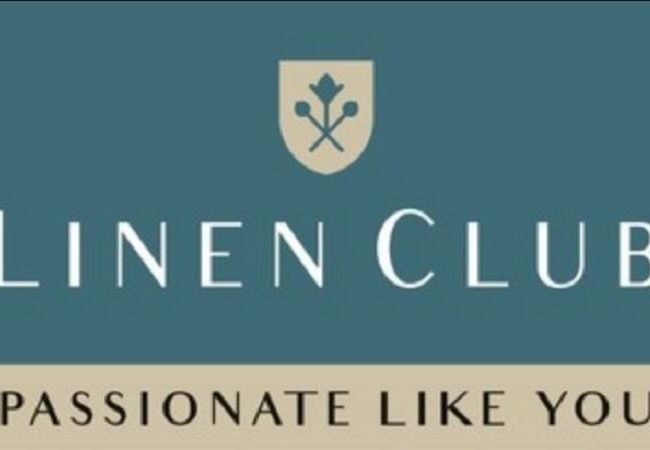
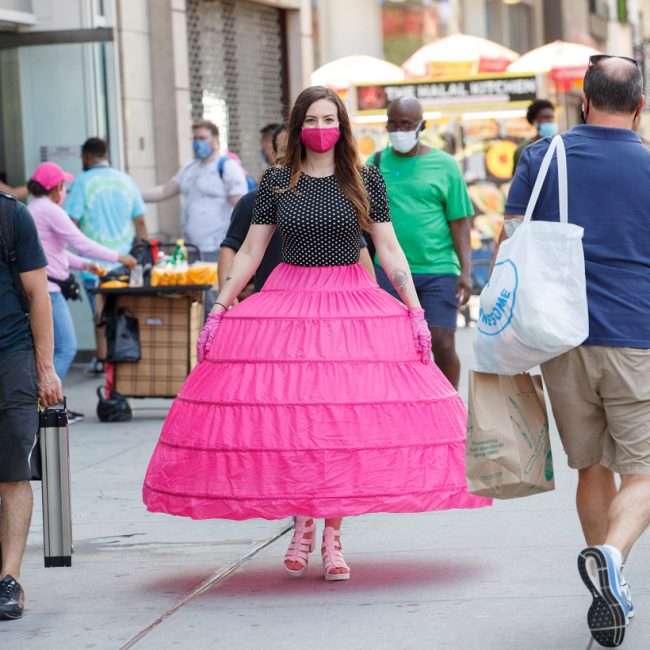


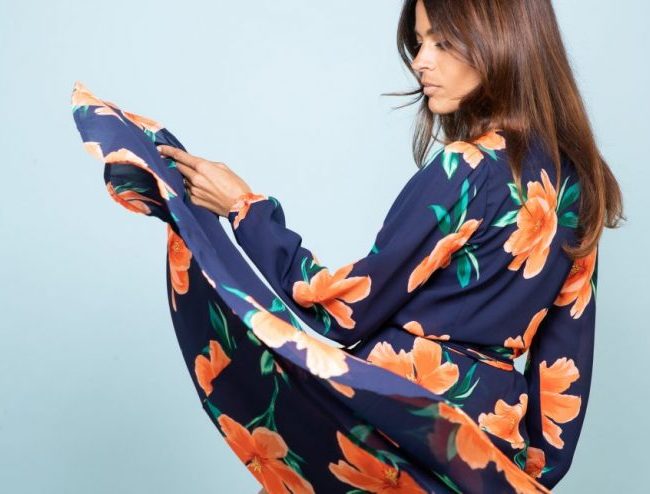

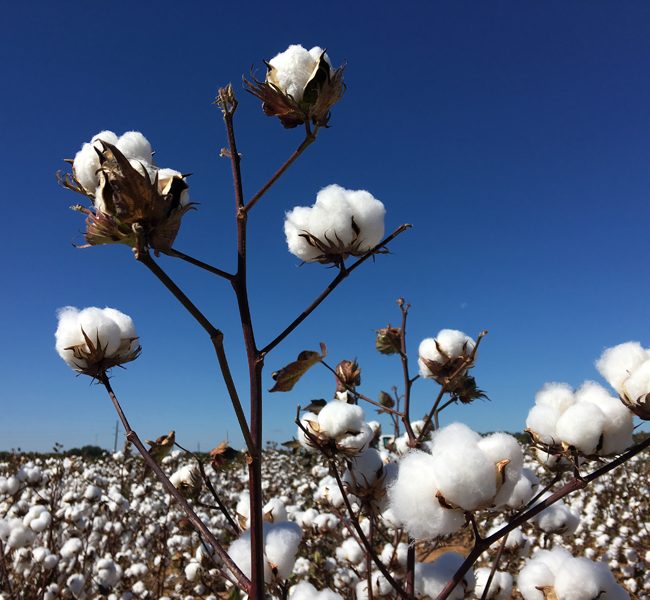

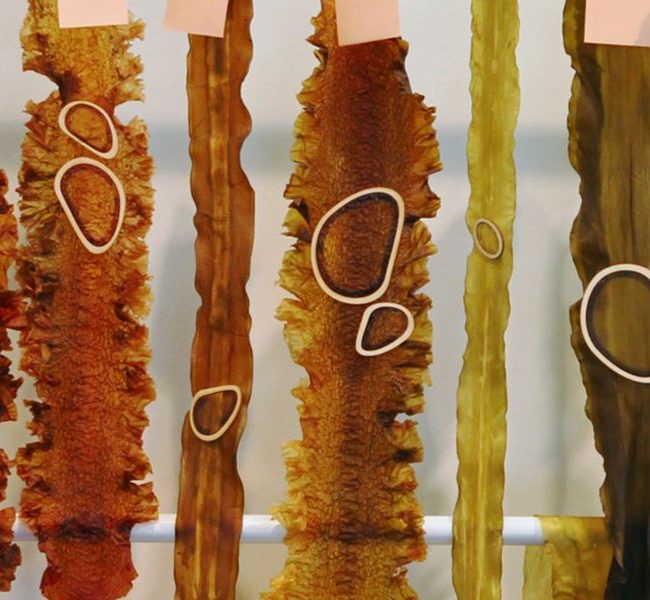
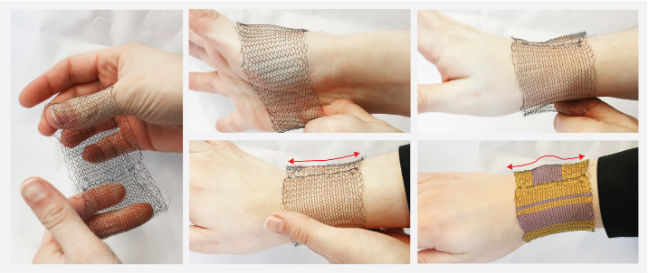
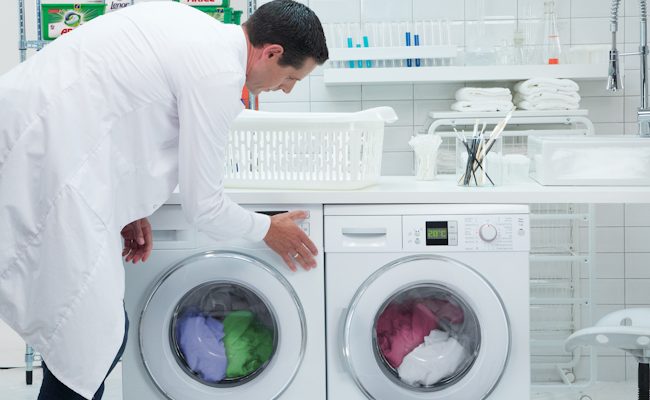
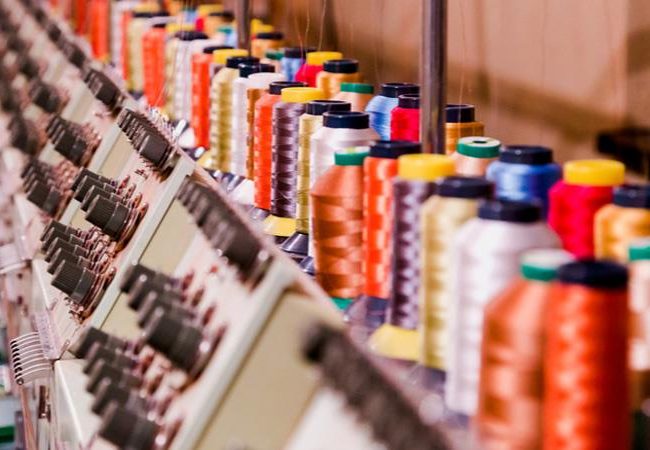
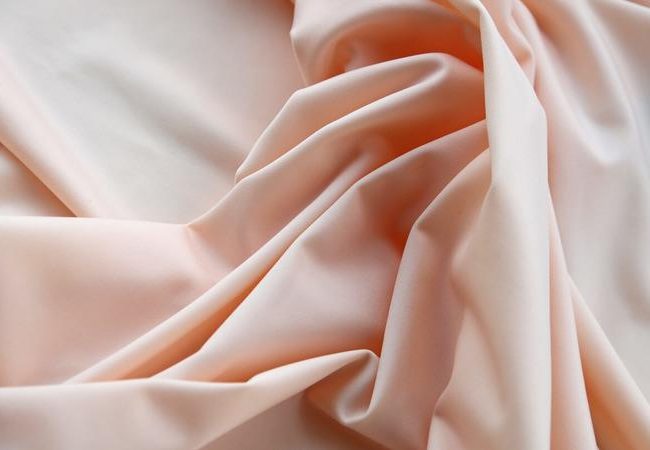
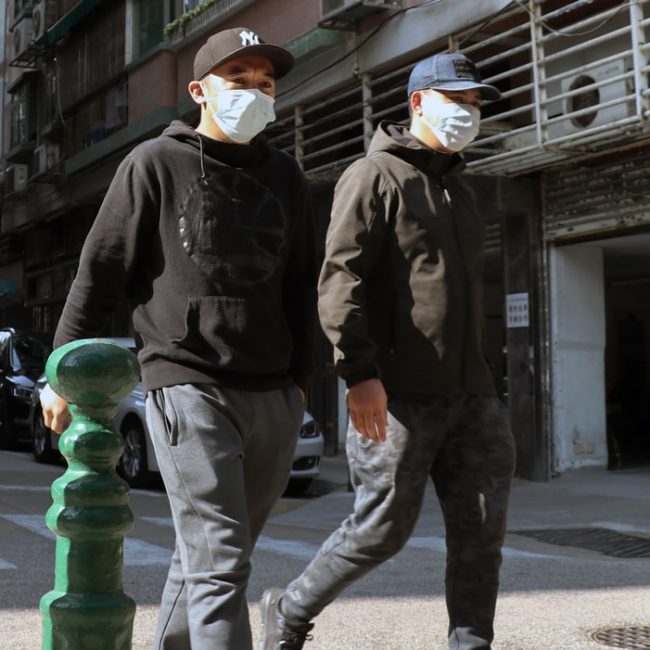

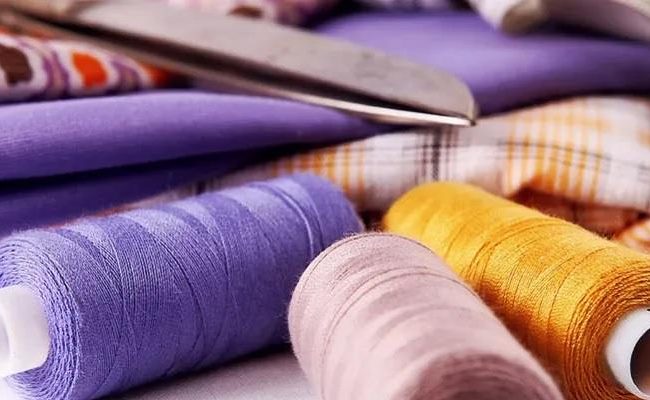


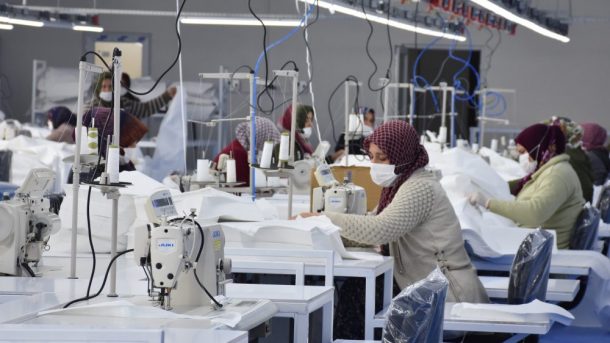

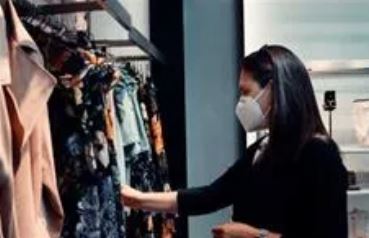


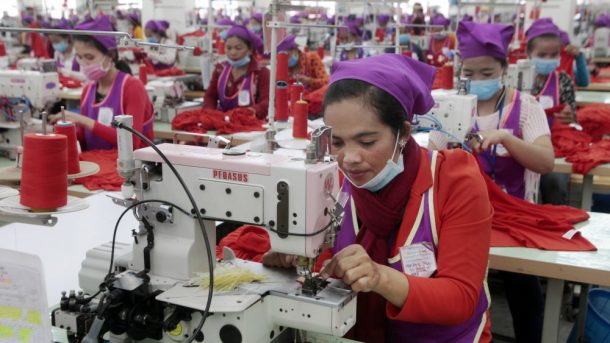
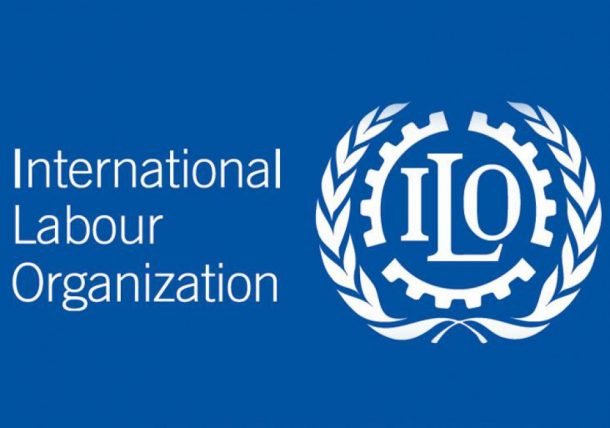
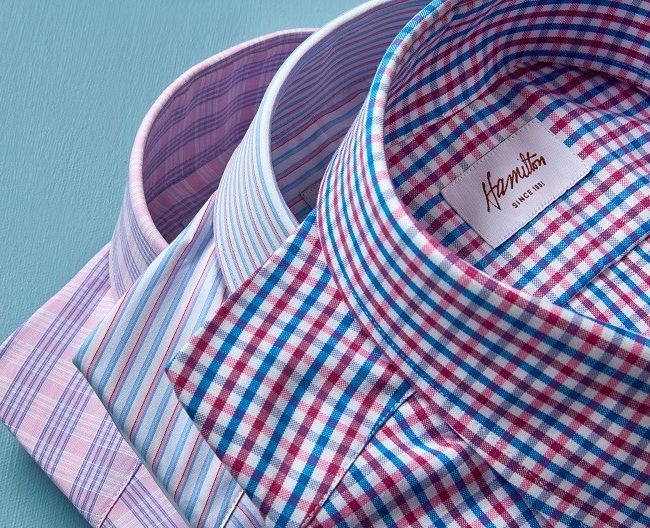

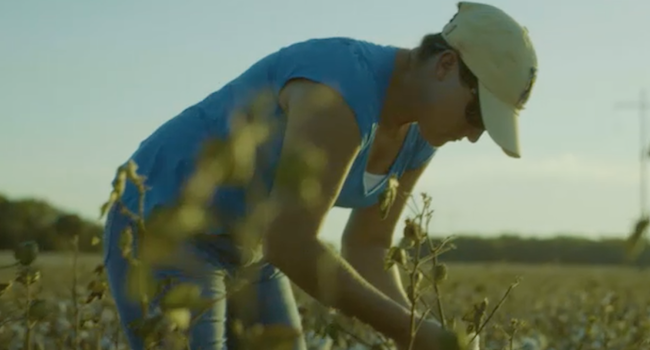
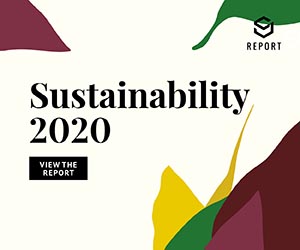

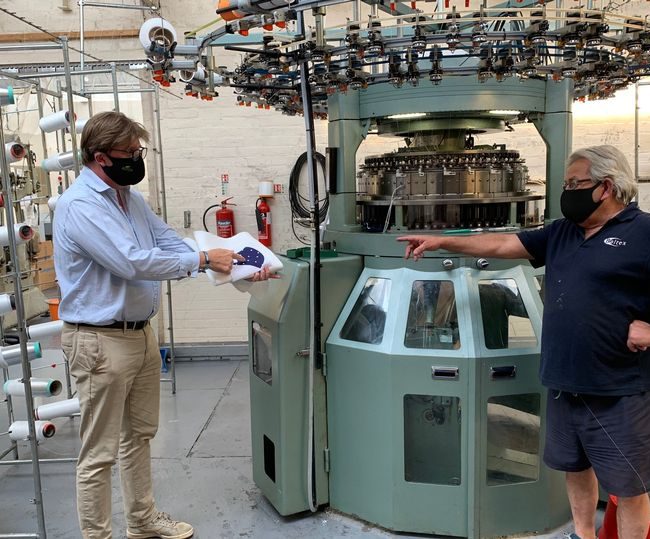

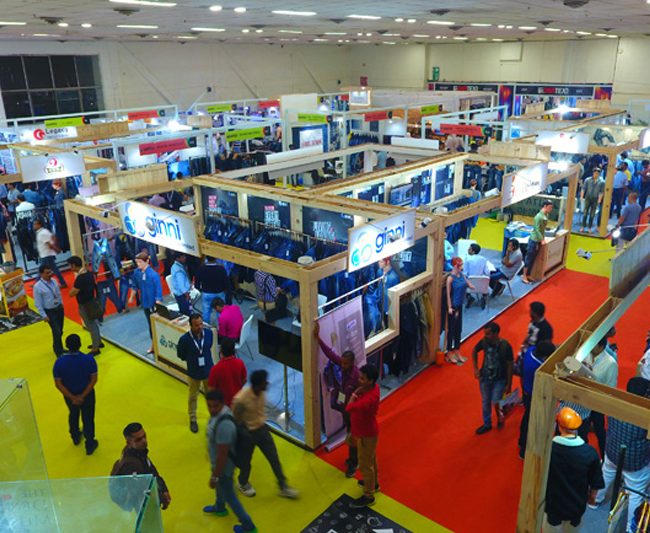
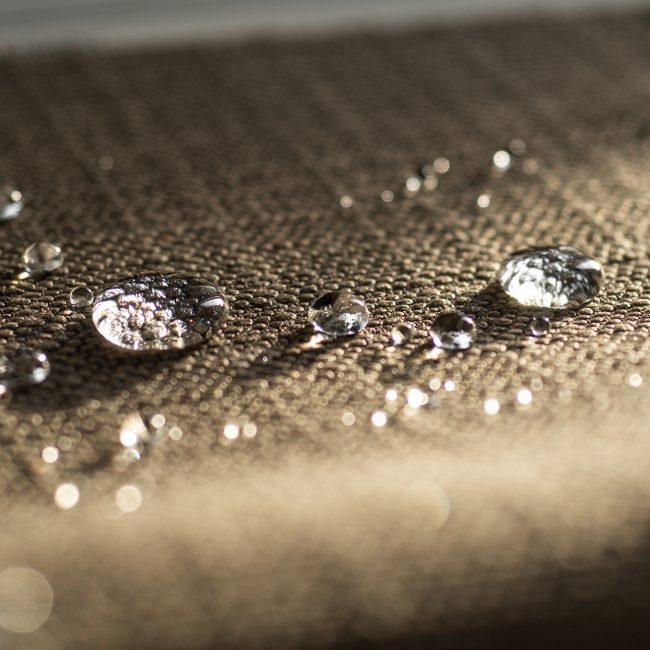




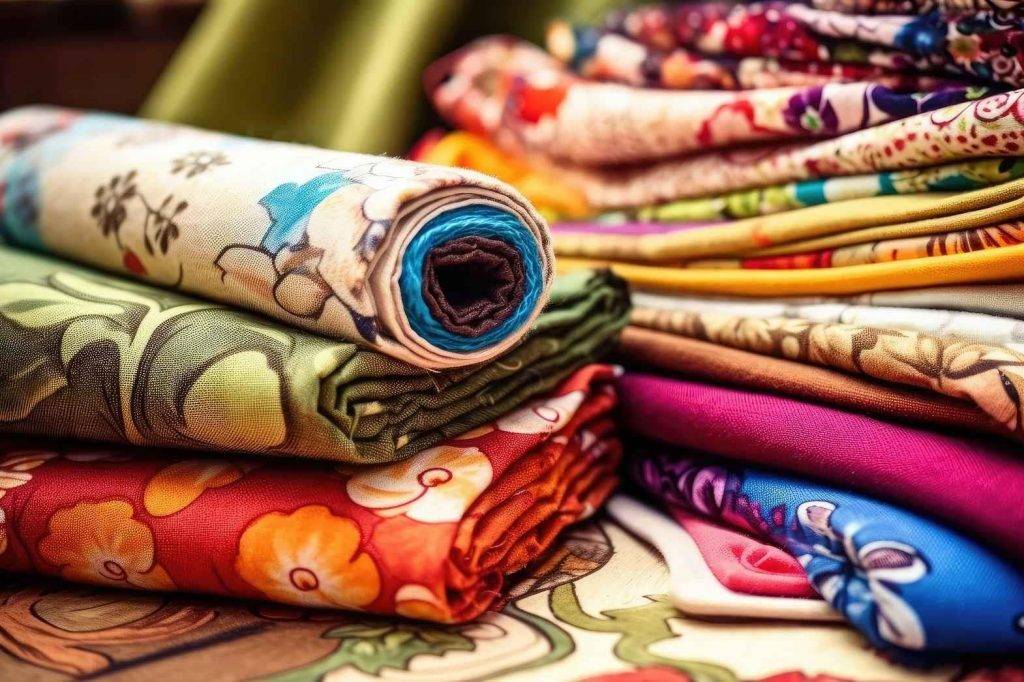
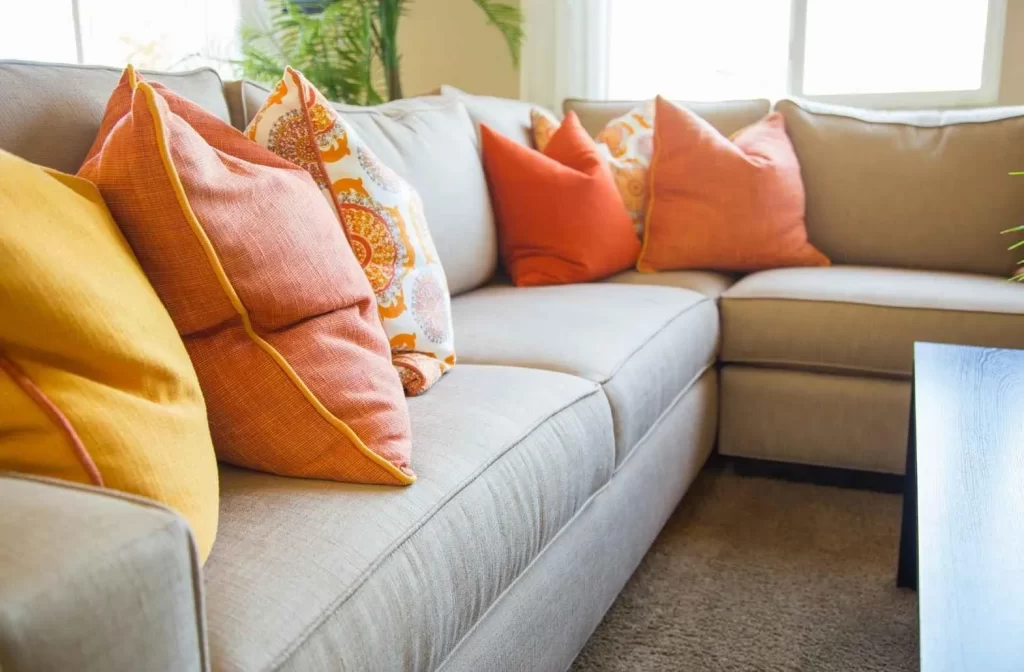
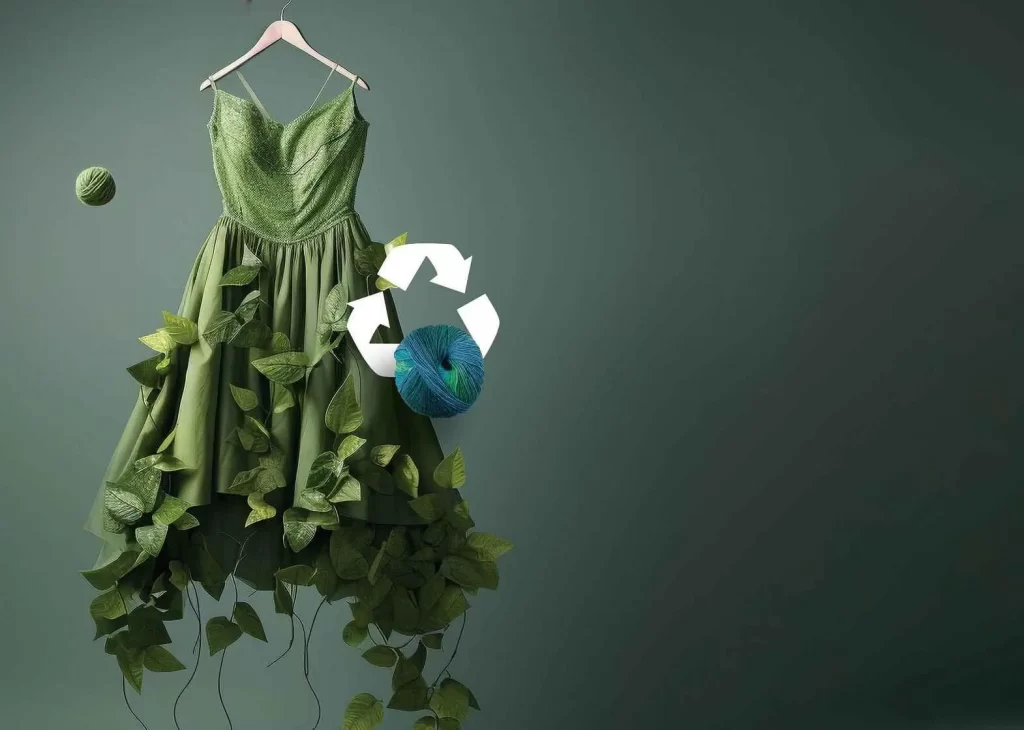
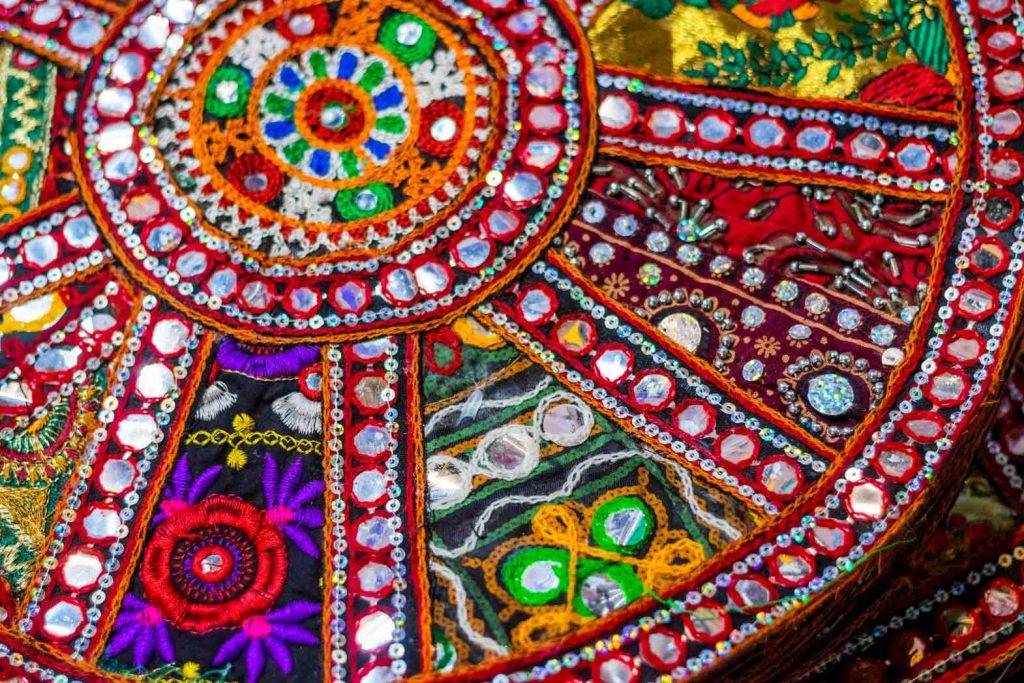
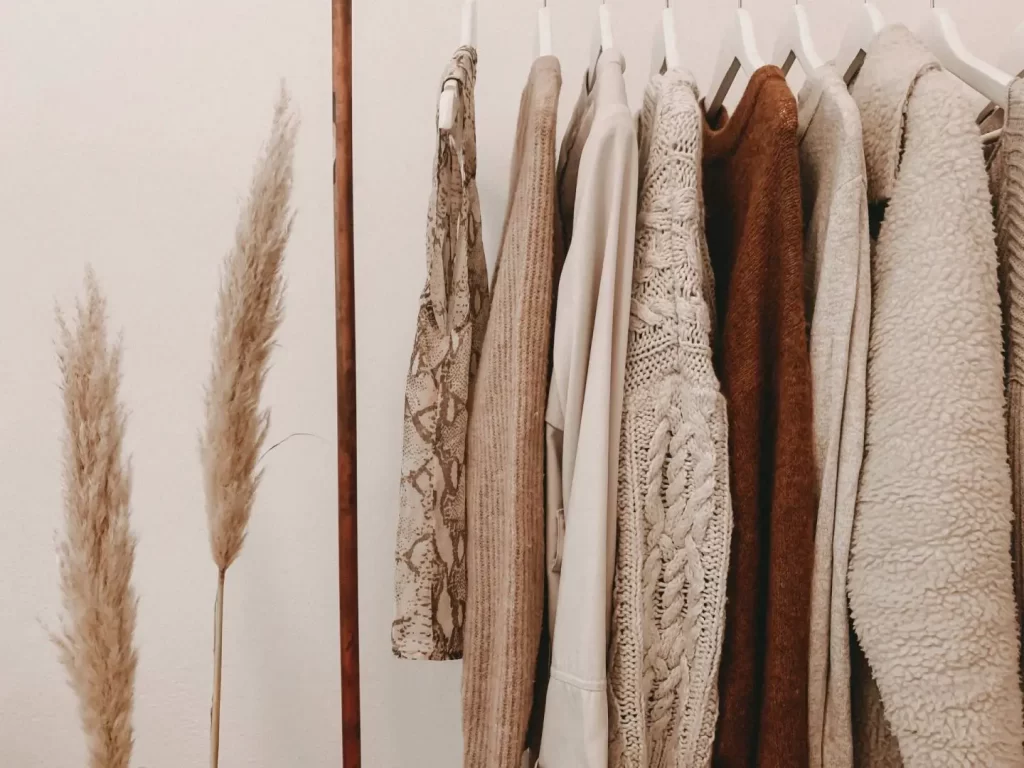
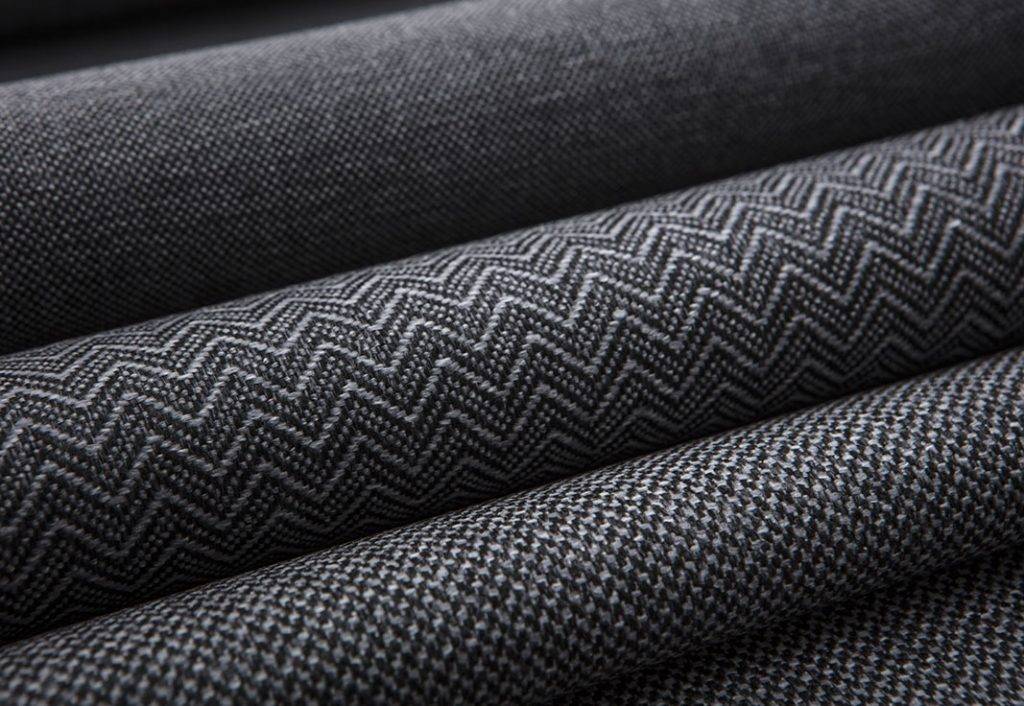
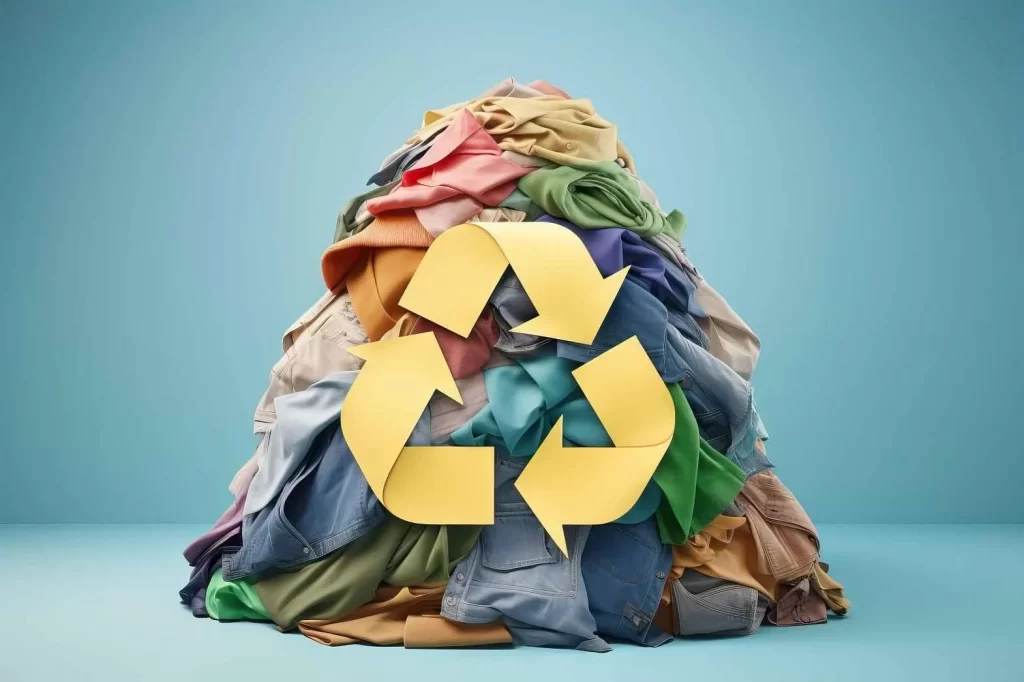
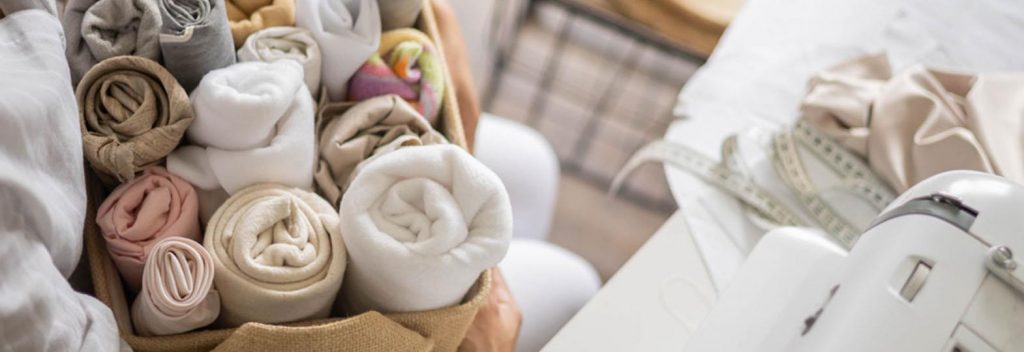
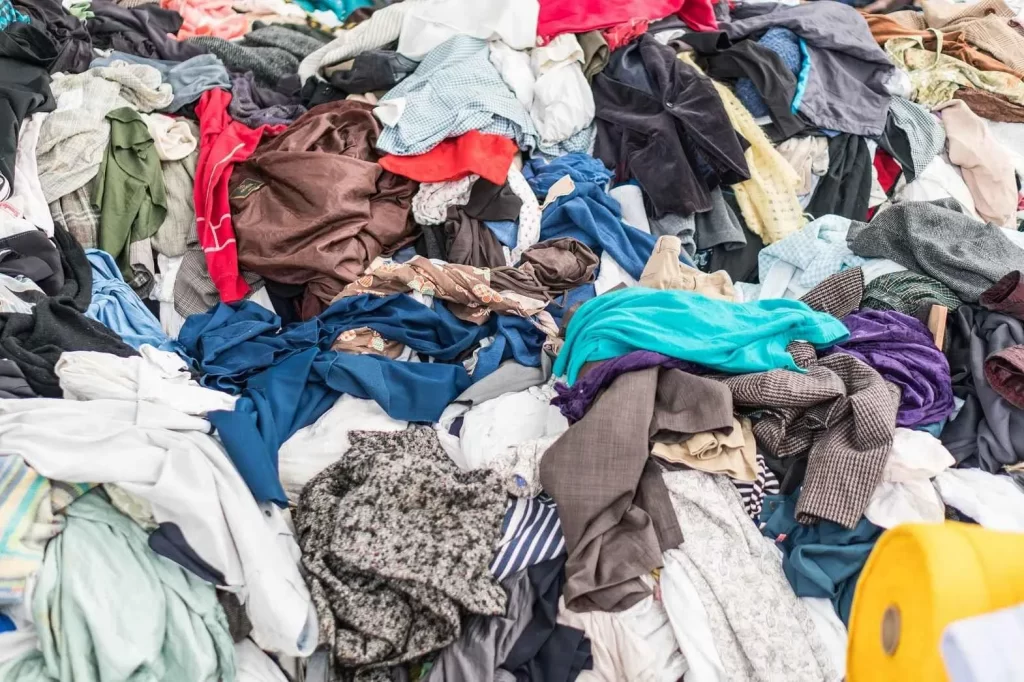
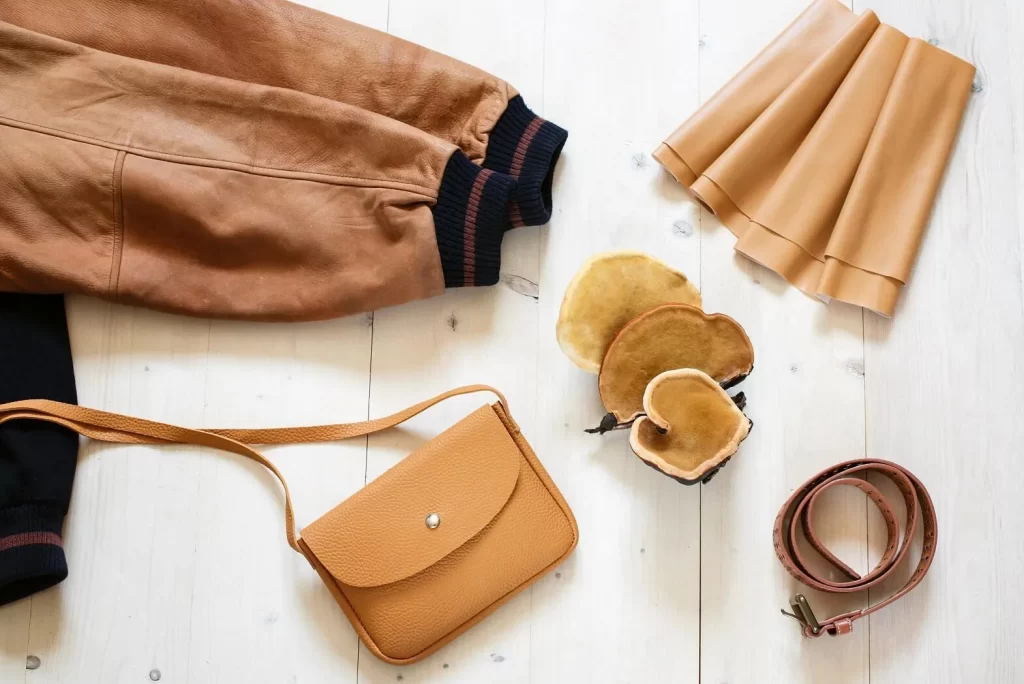
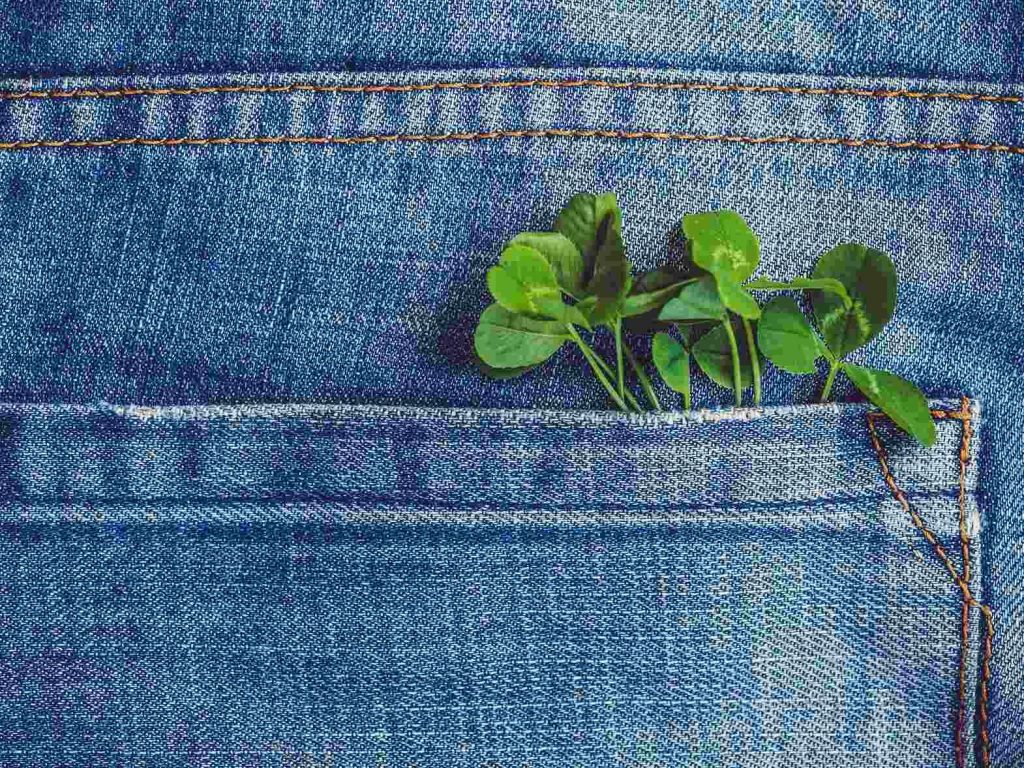
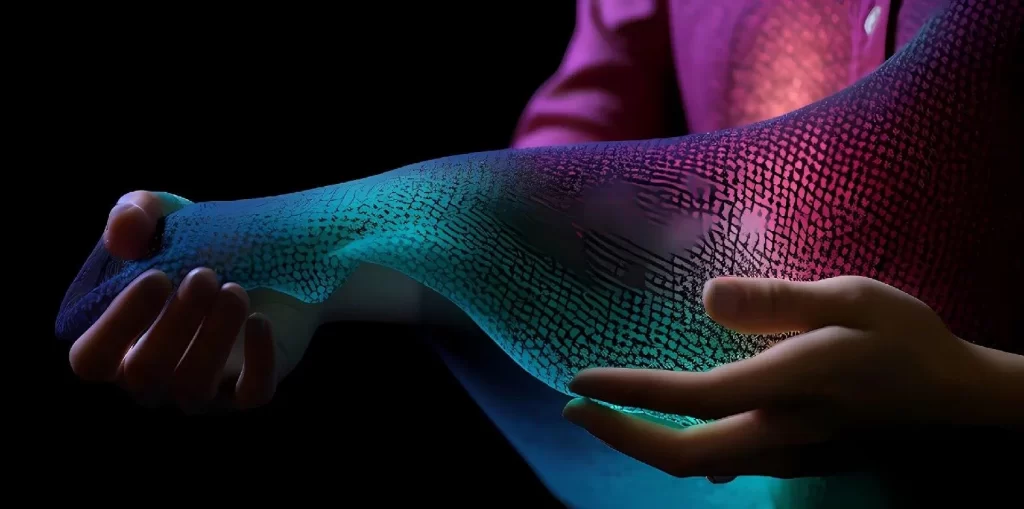
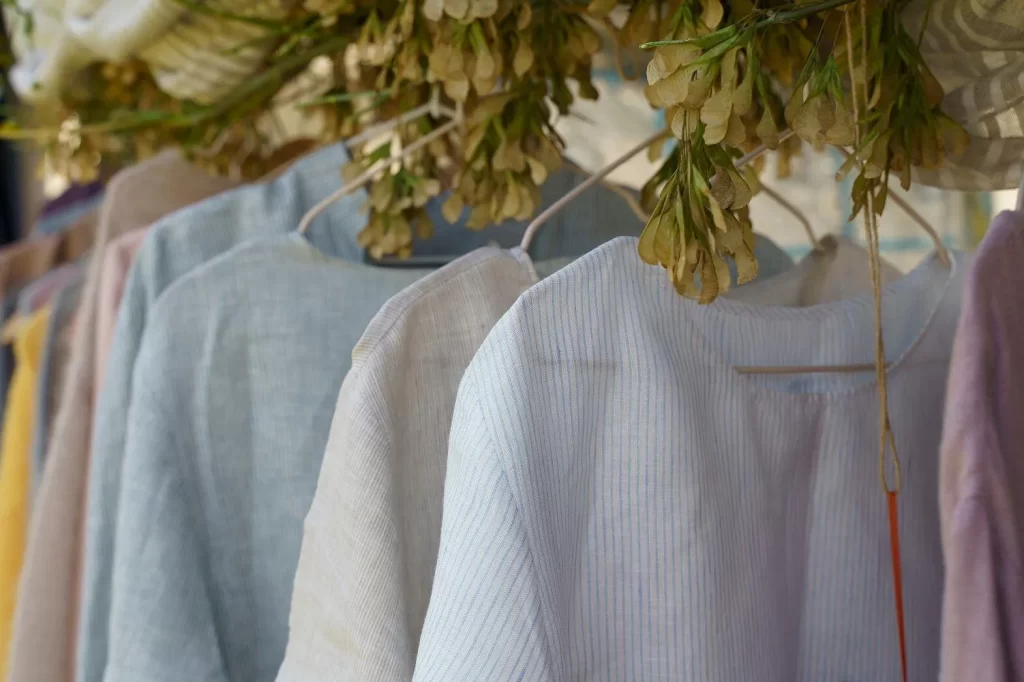
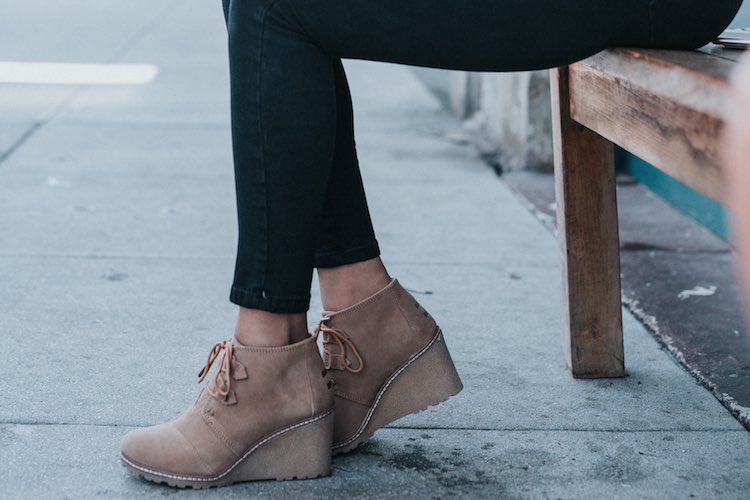
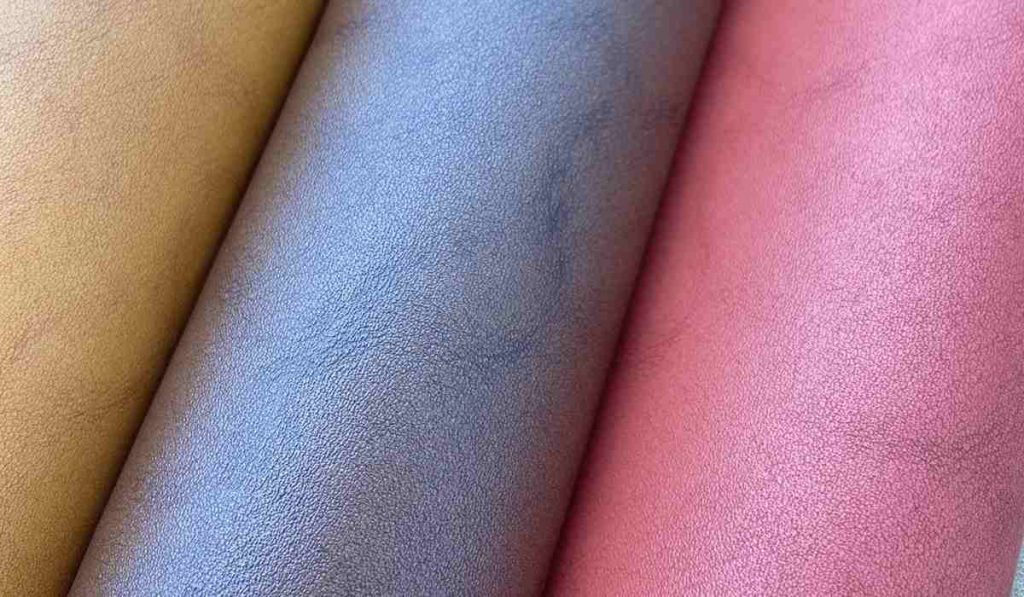
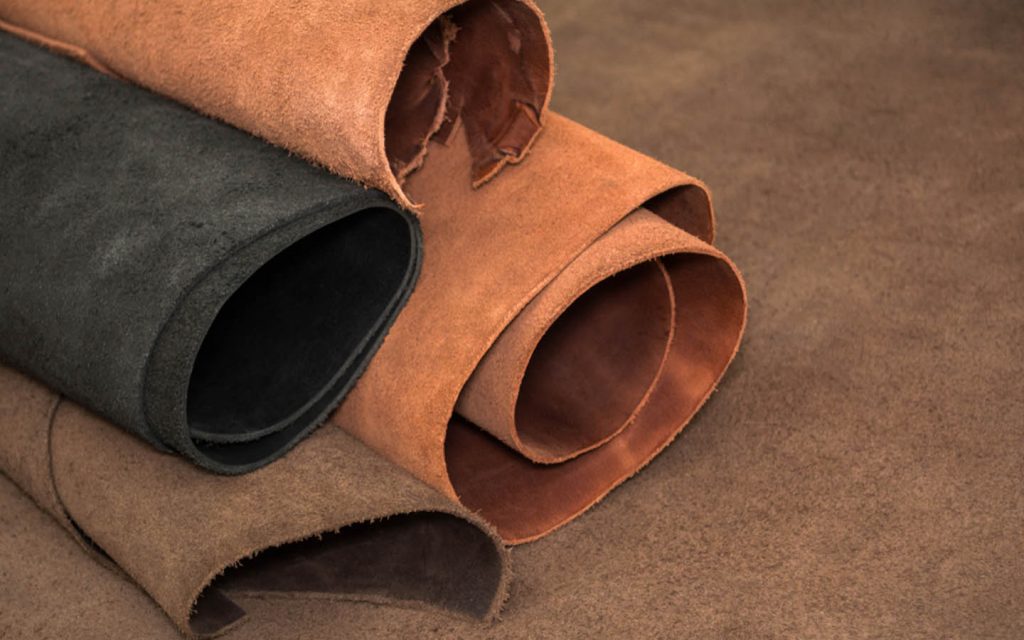

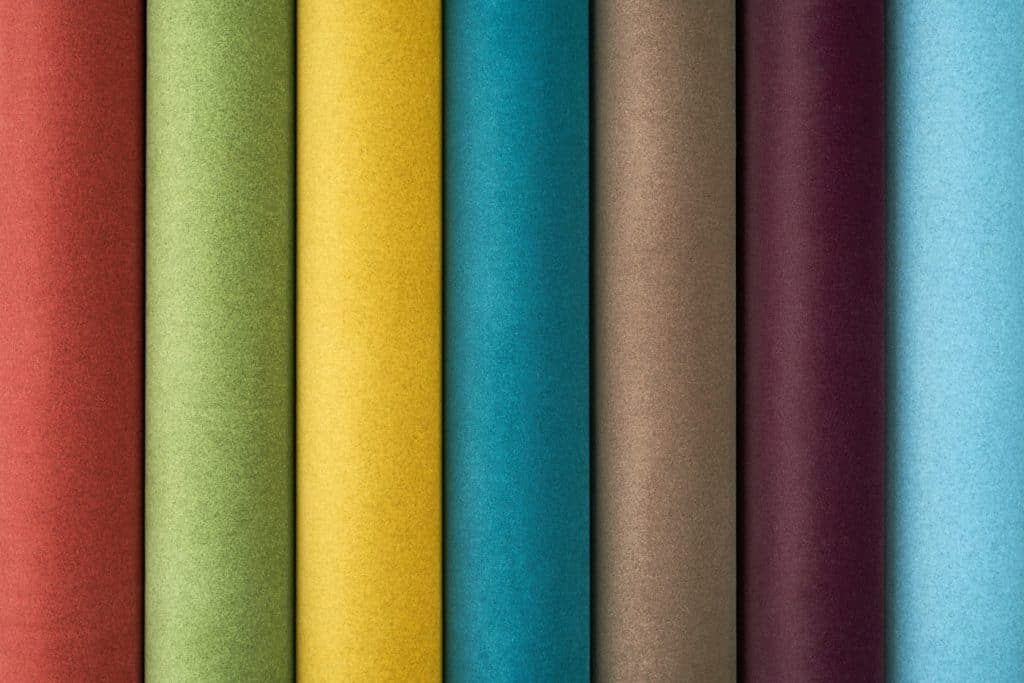
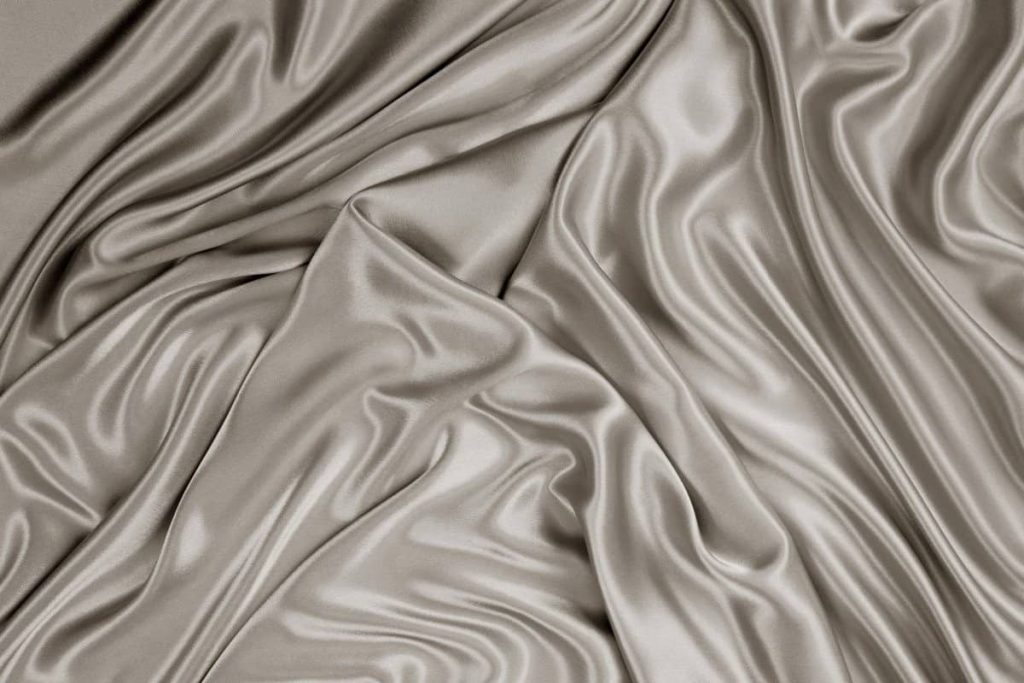






Pingback: Elastane Fabric- Silk Fabric - what is Silk Fabric | KHOSHRANG Co.LTD
Pingback: Organza Fabric | Fabric | Leather Fabric | KHOSHRANG Co.LTD